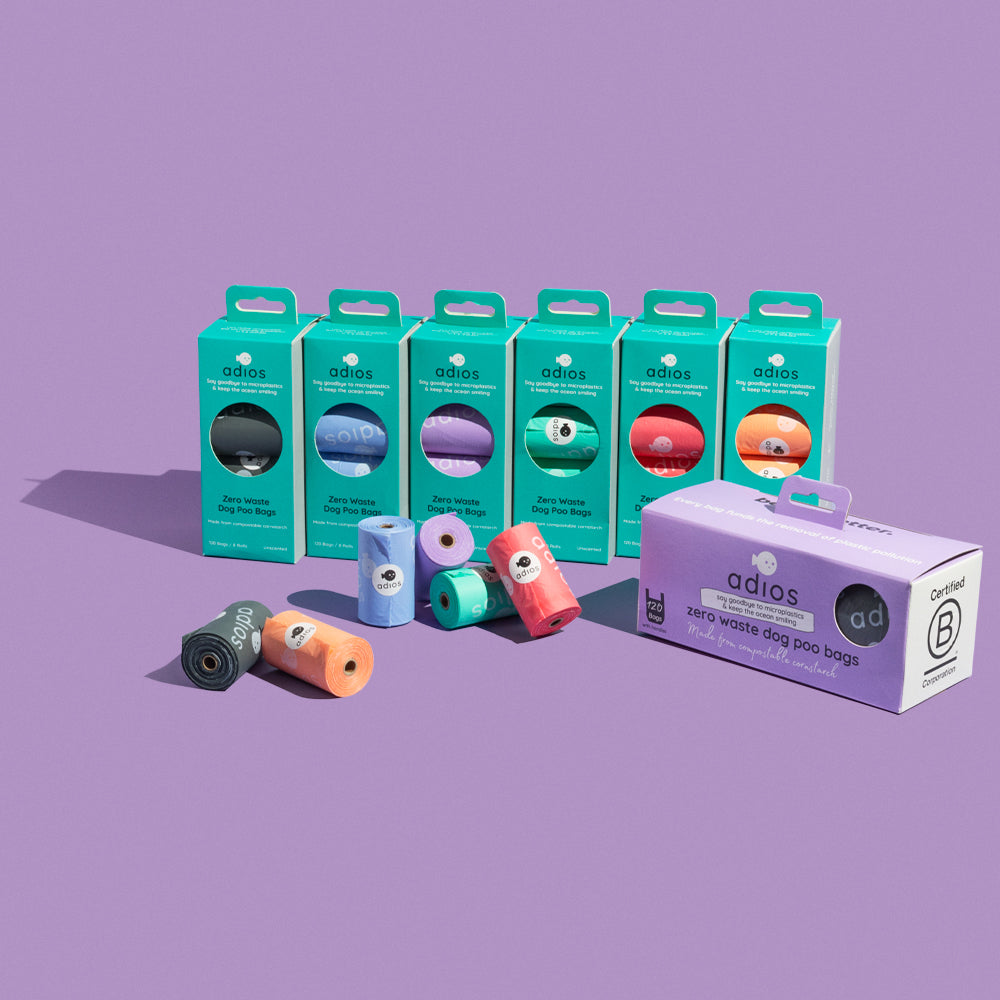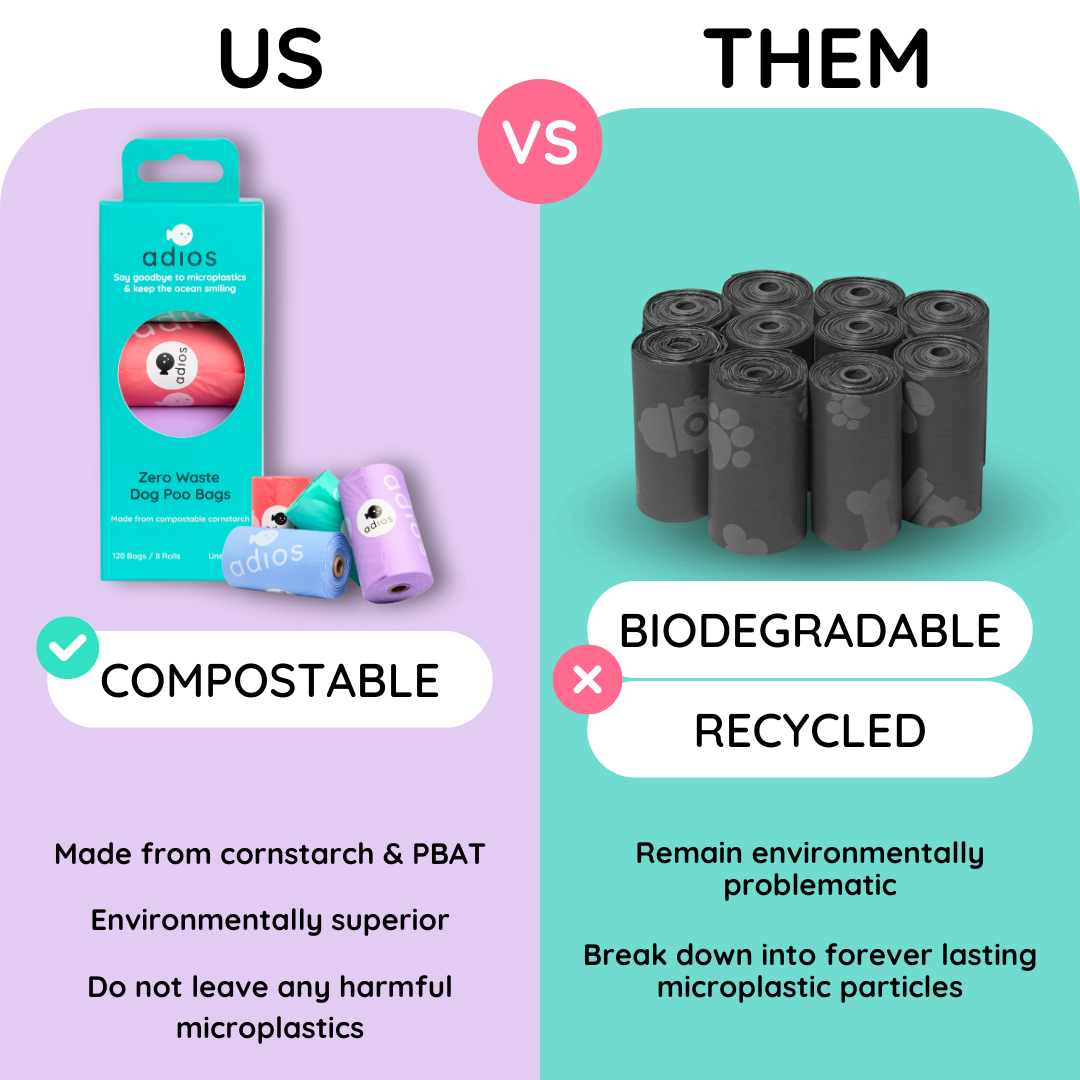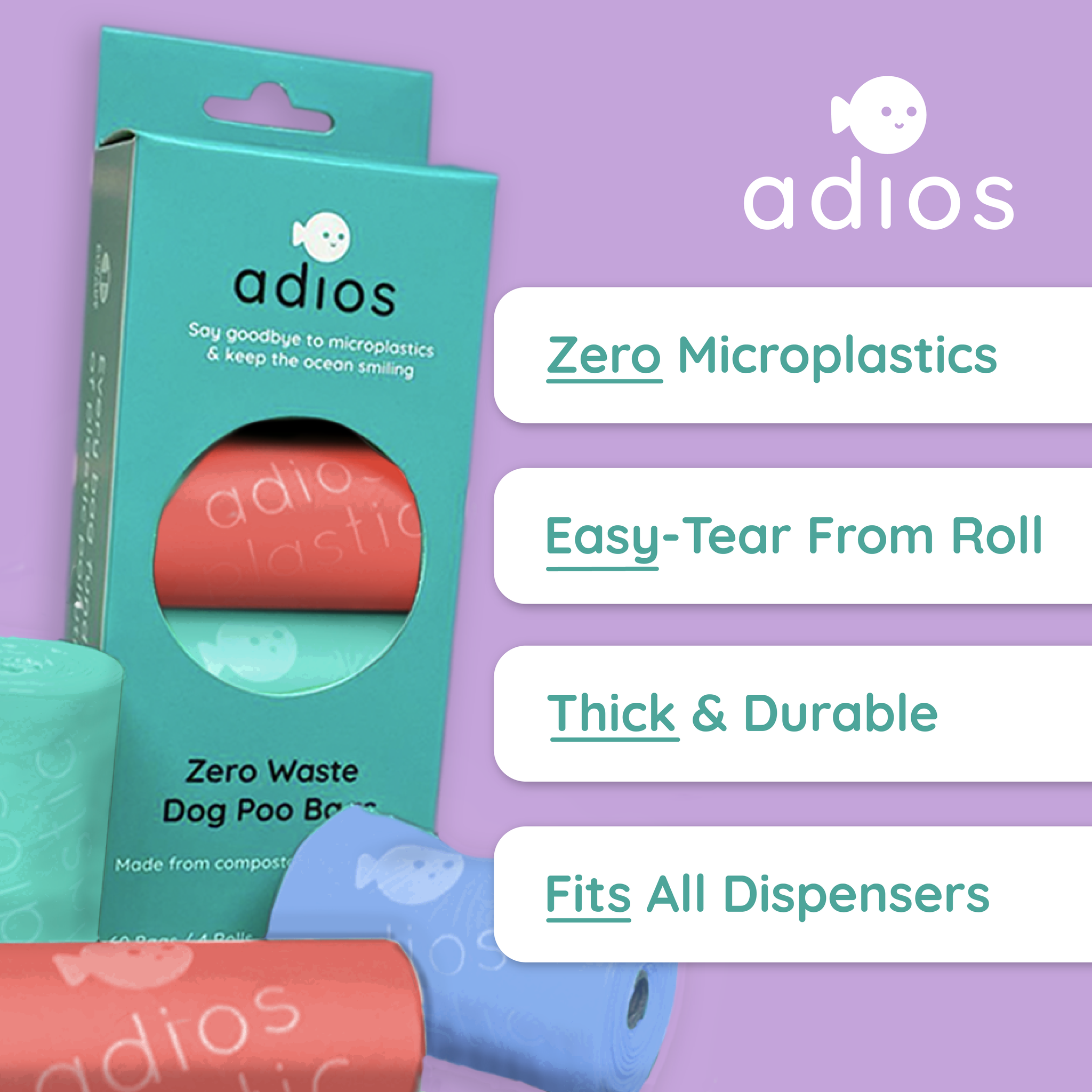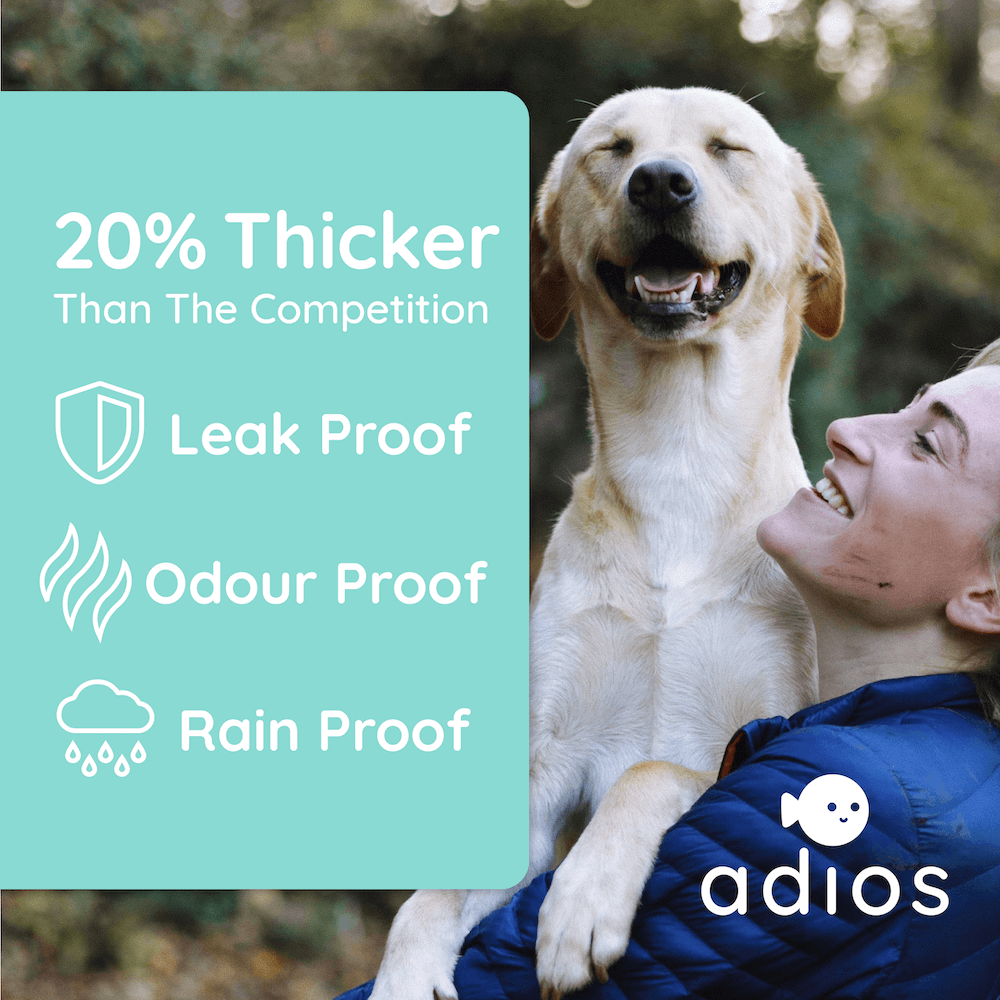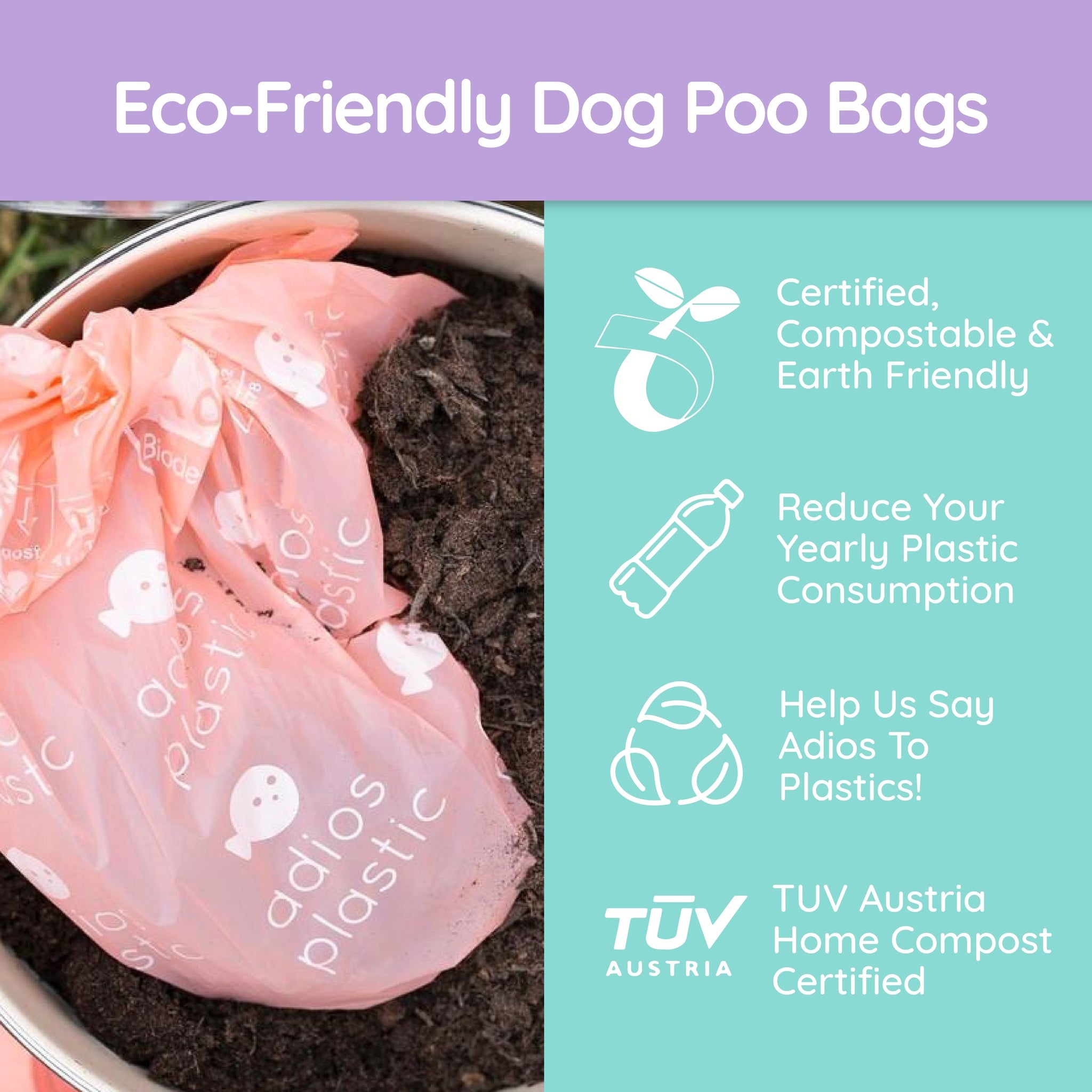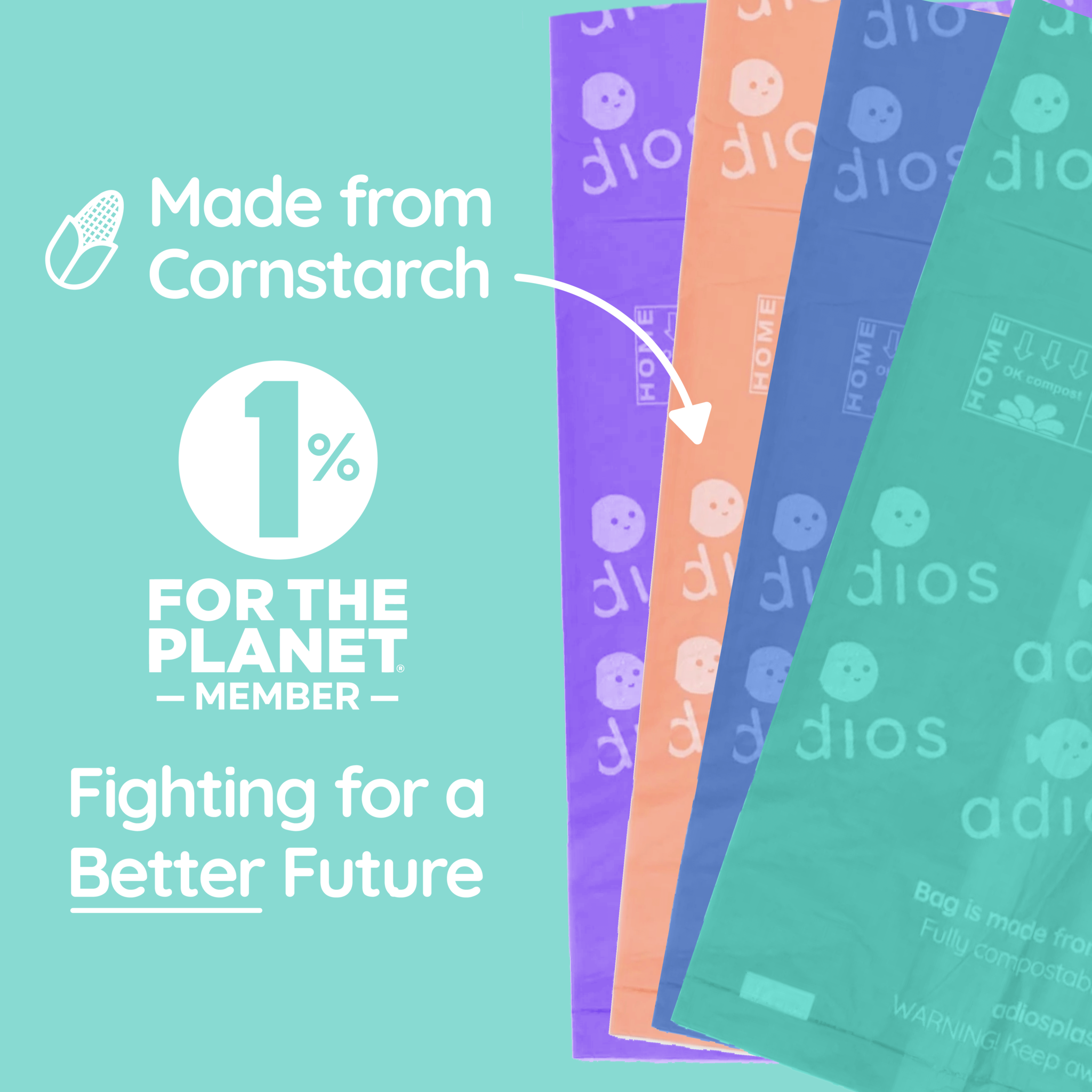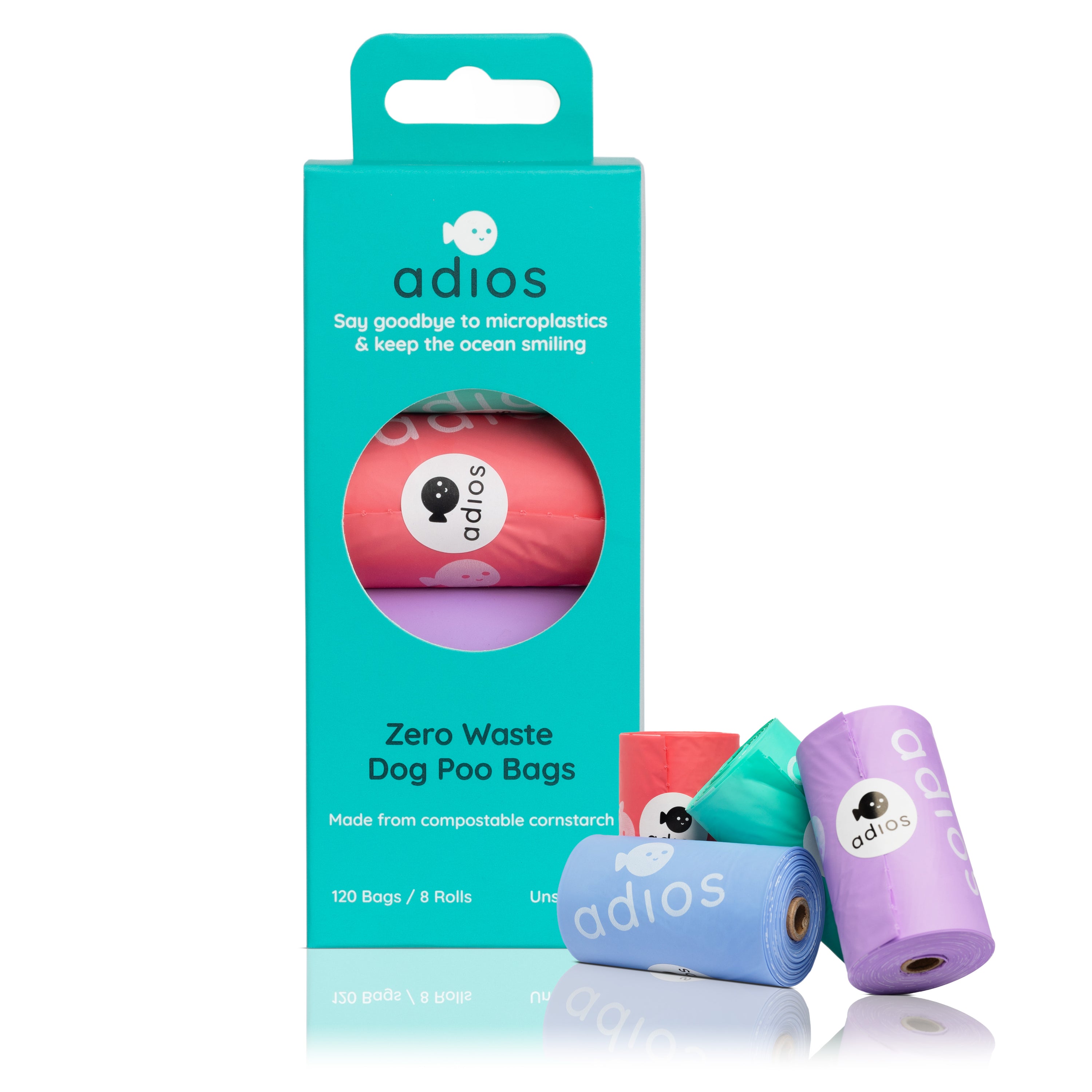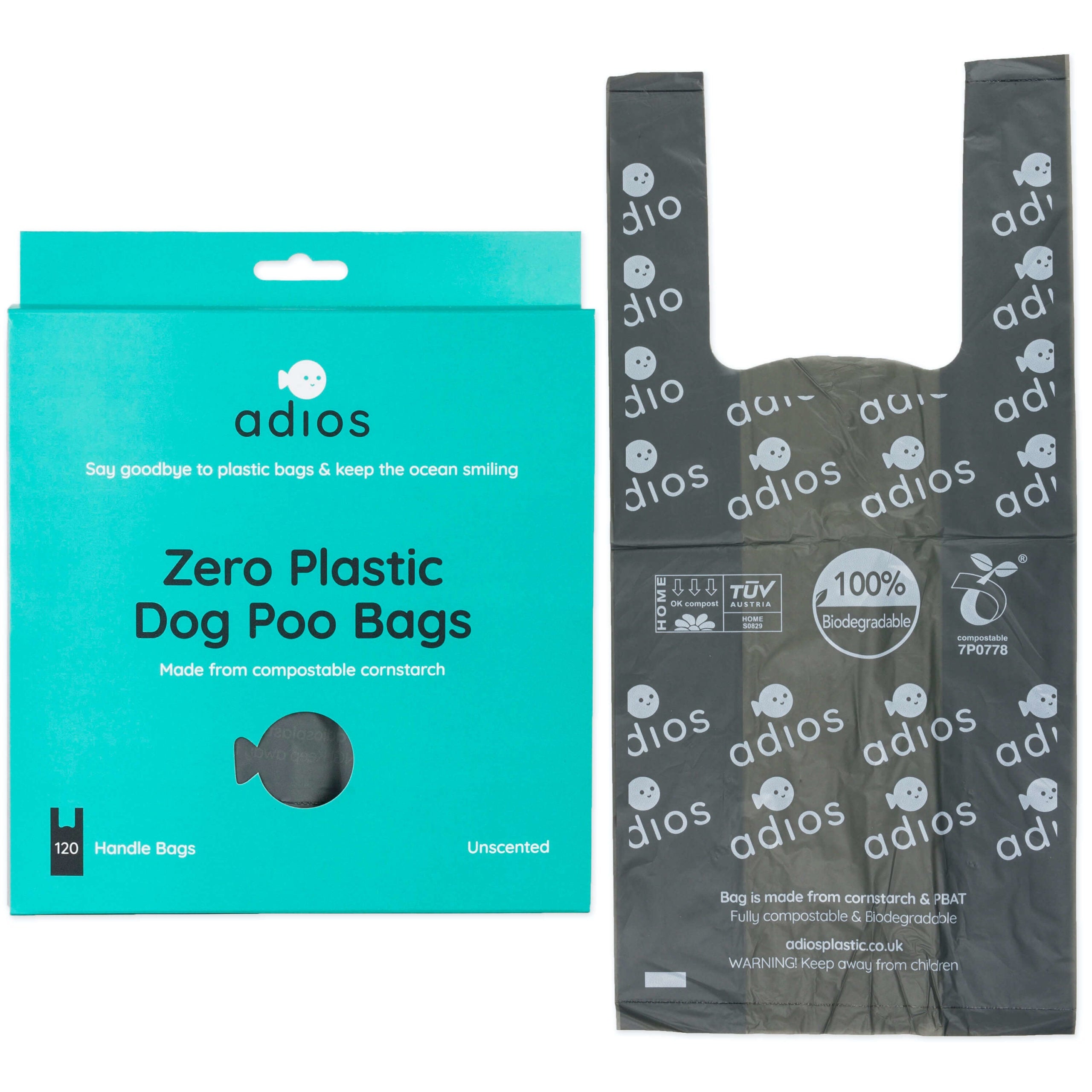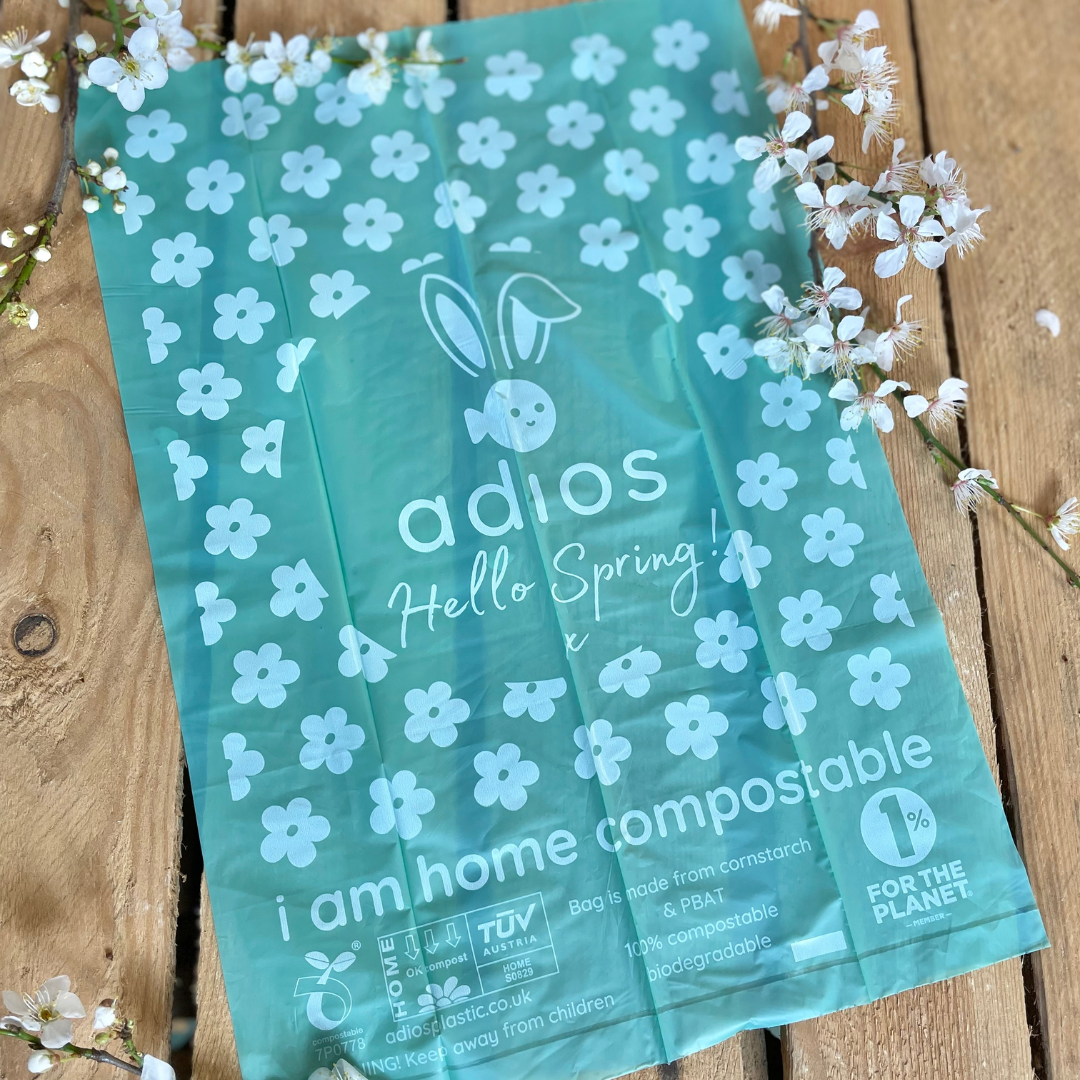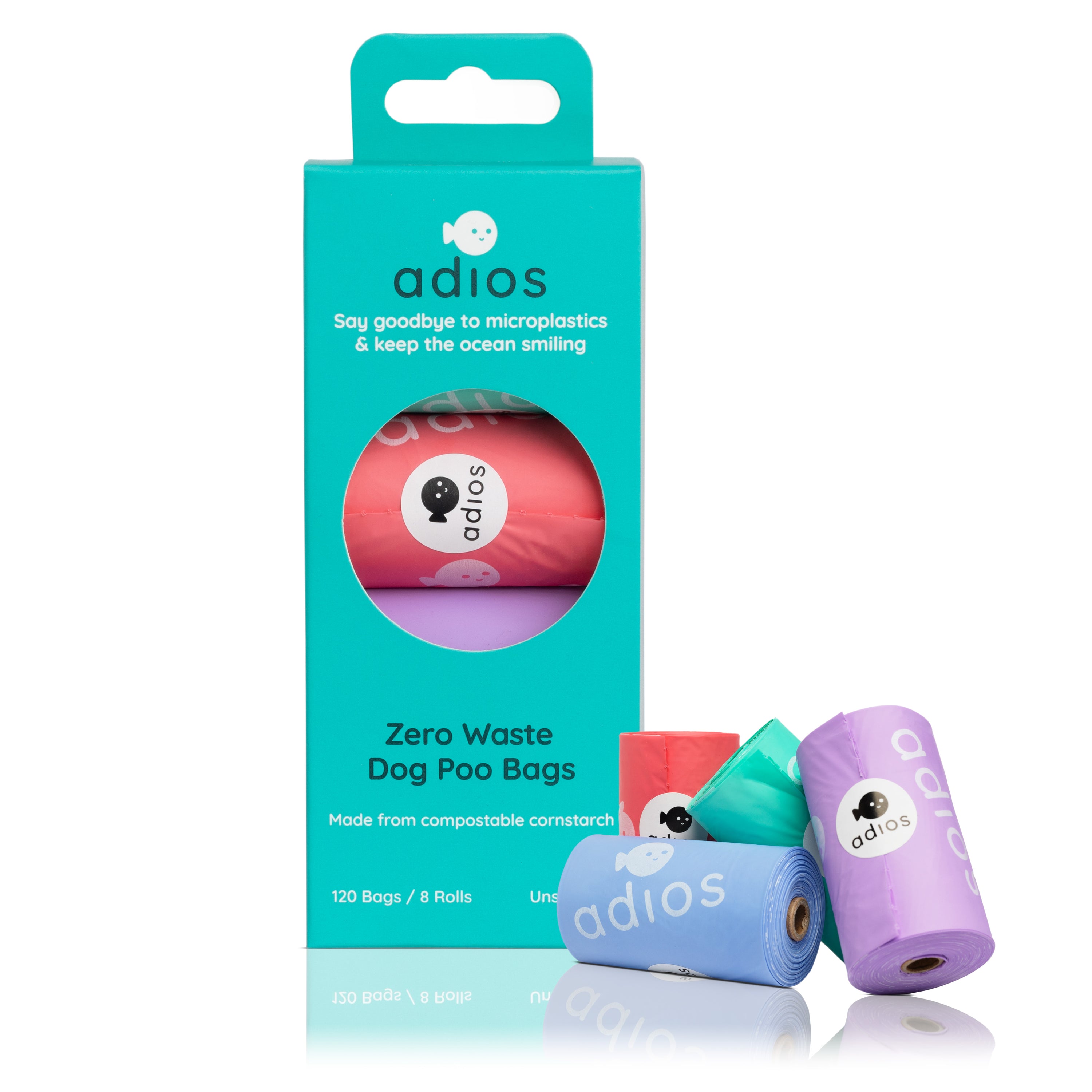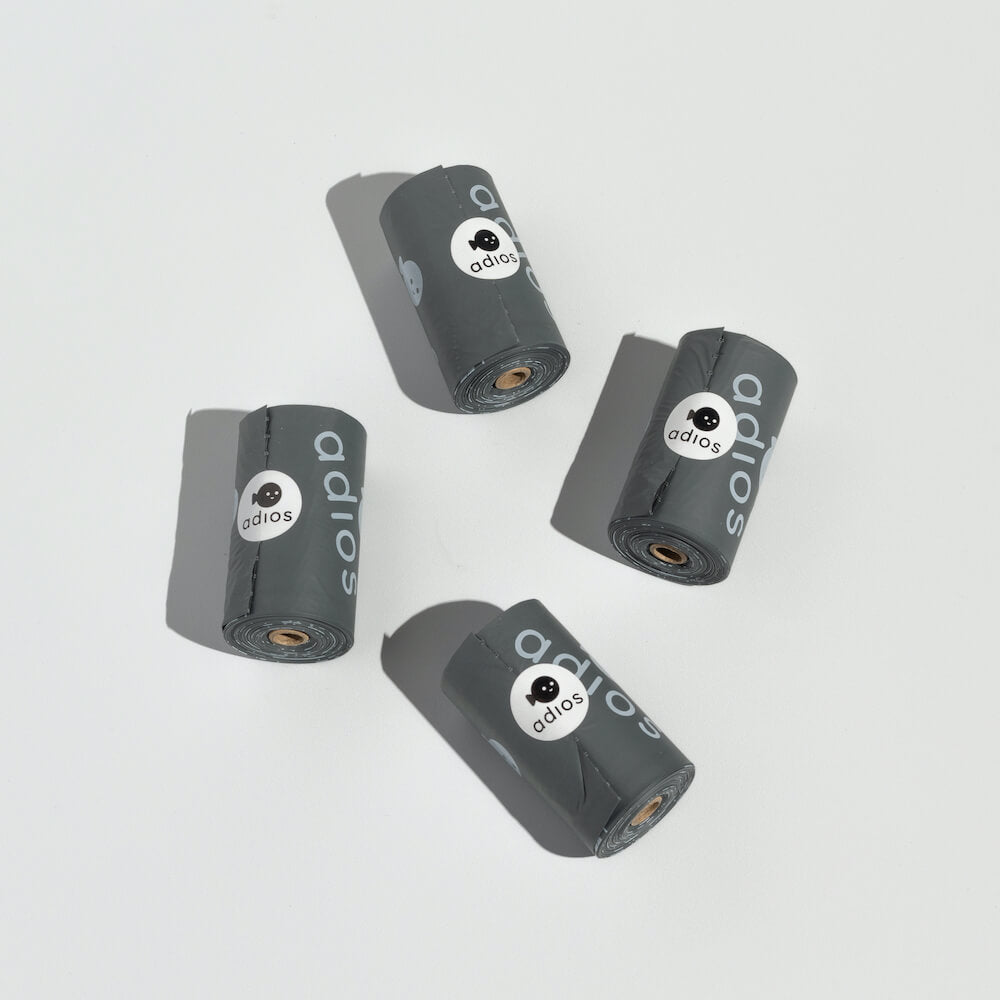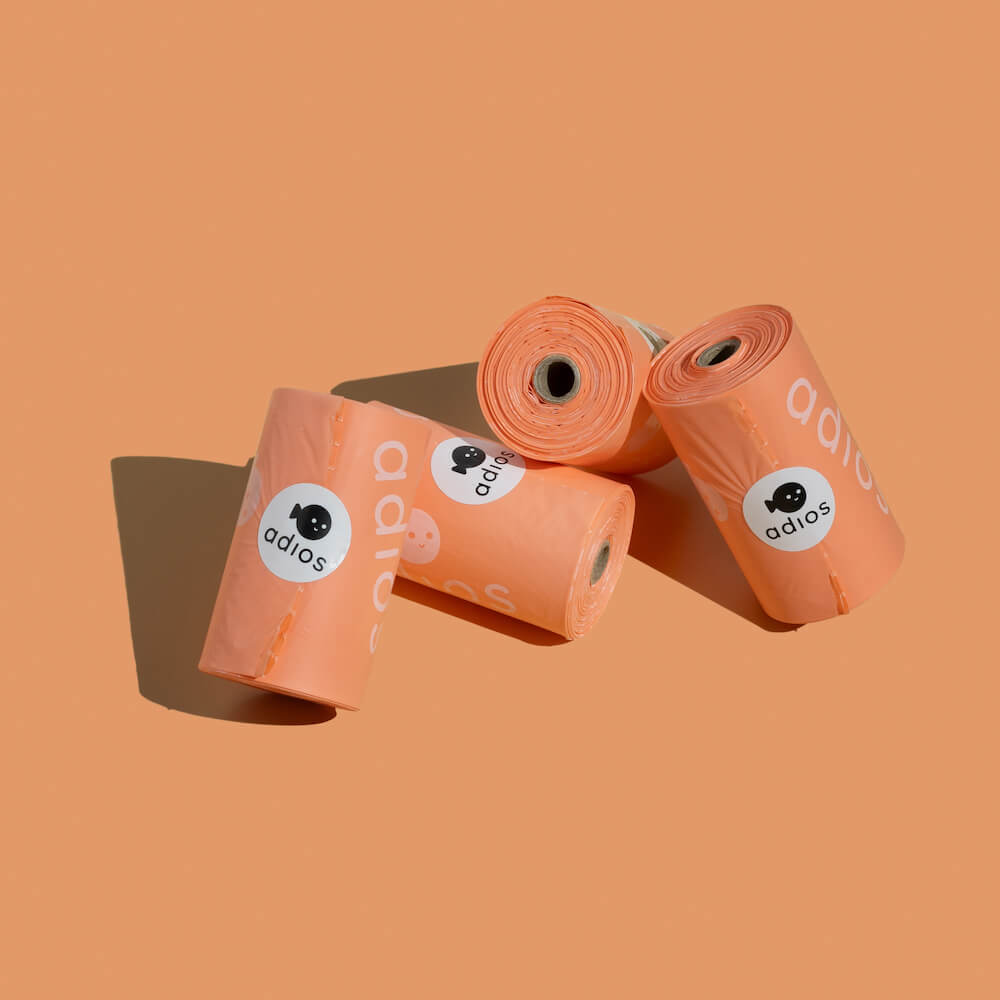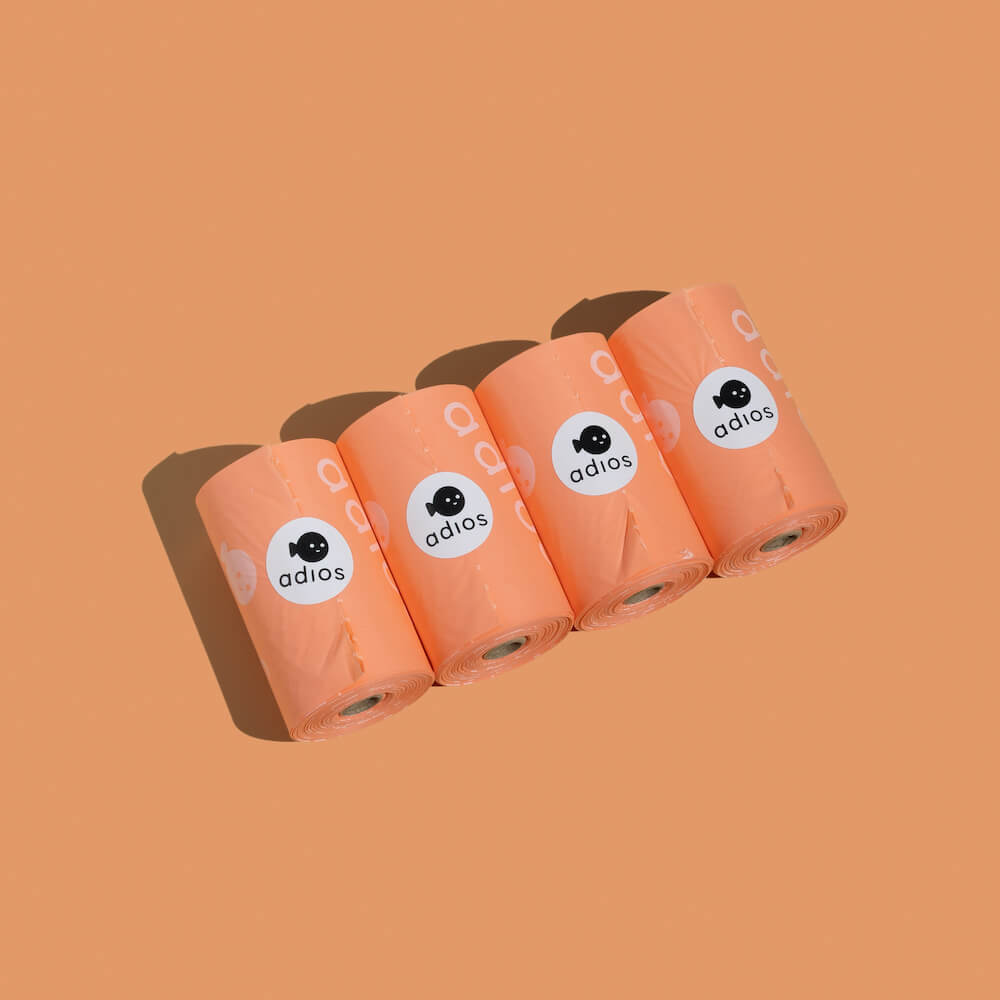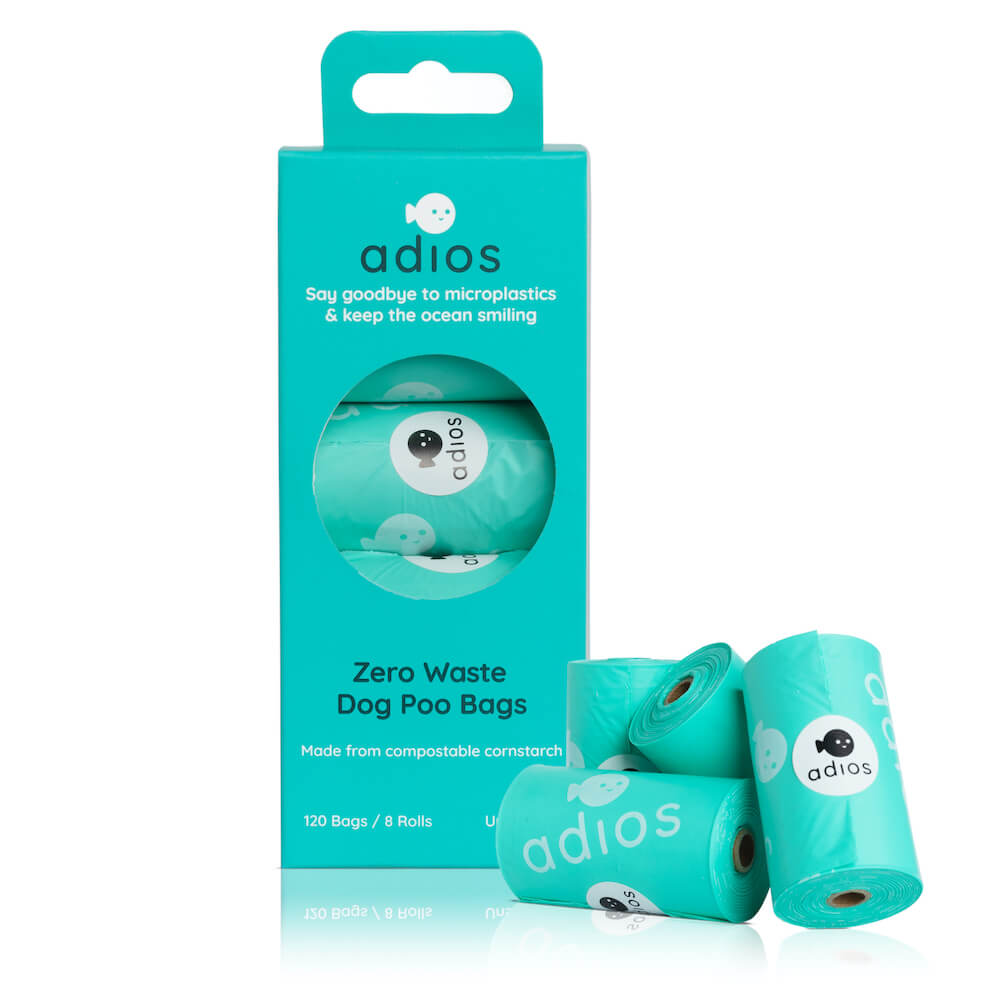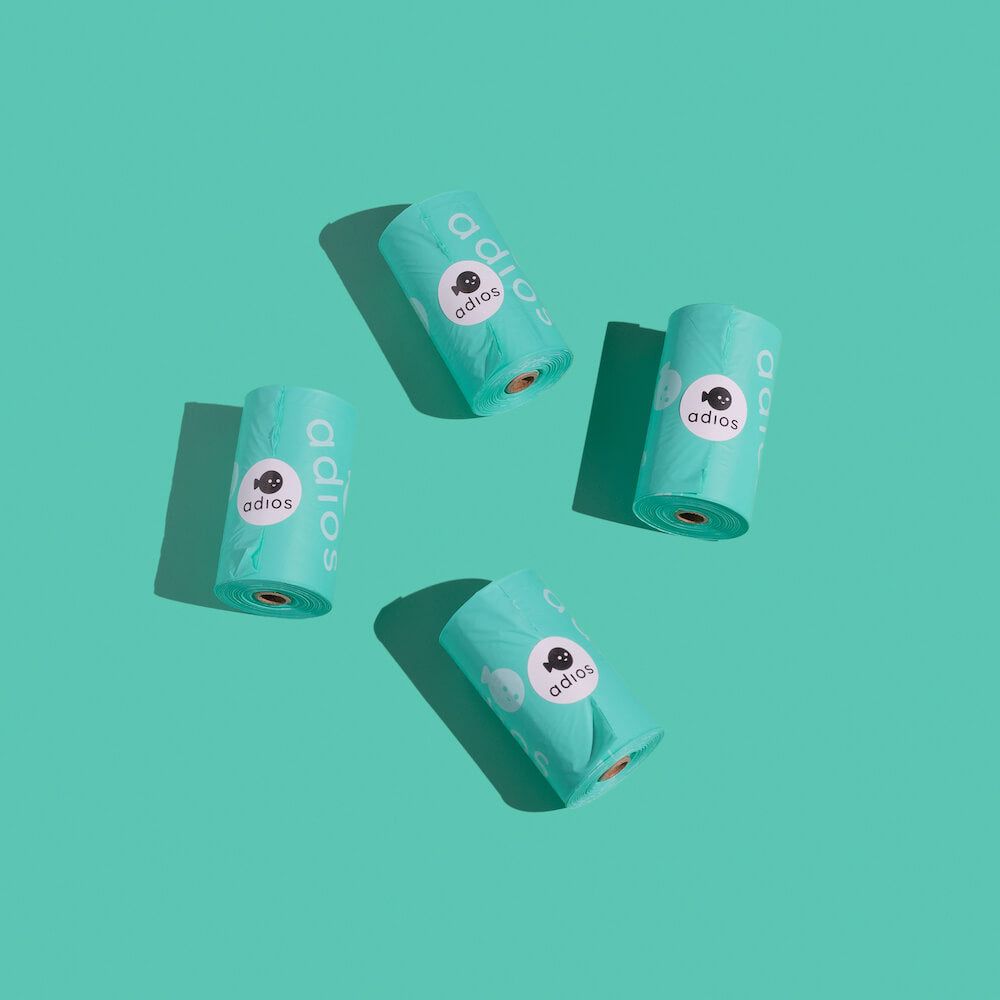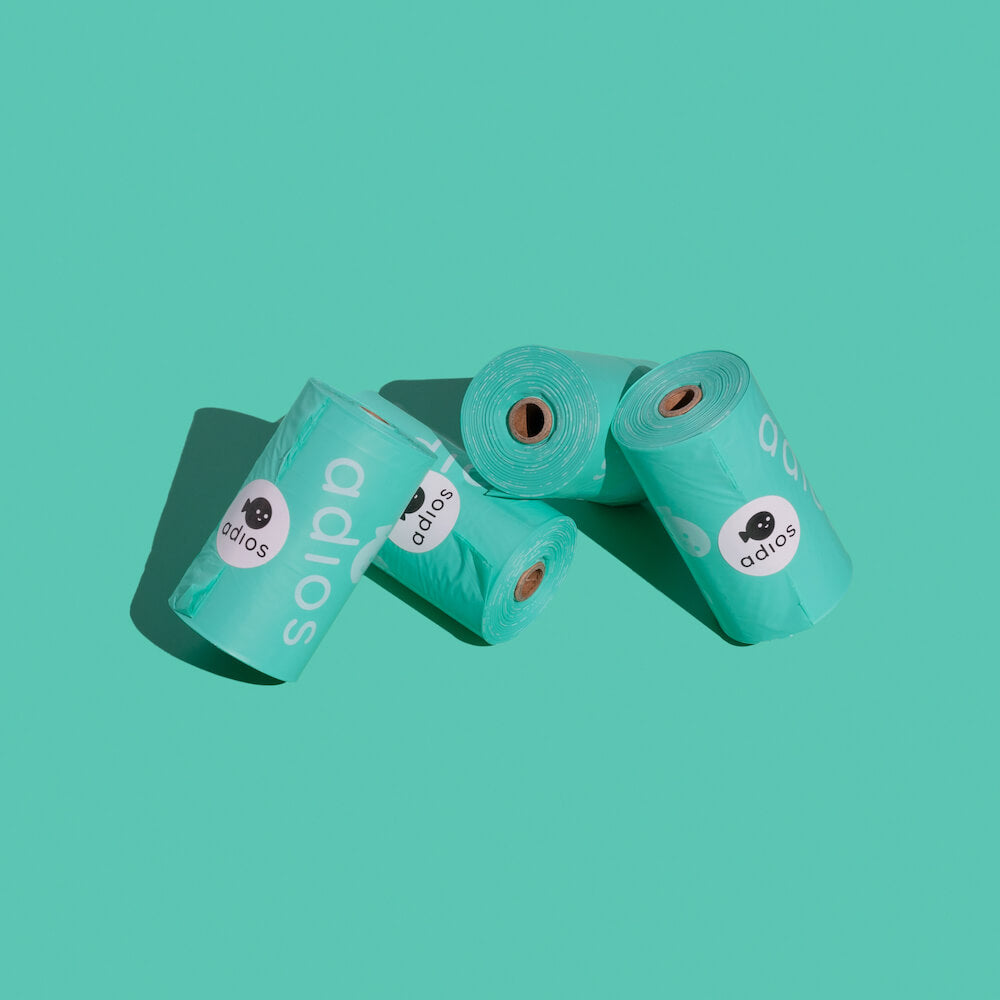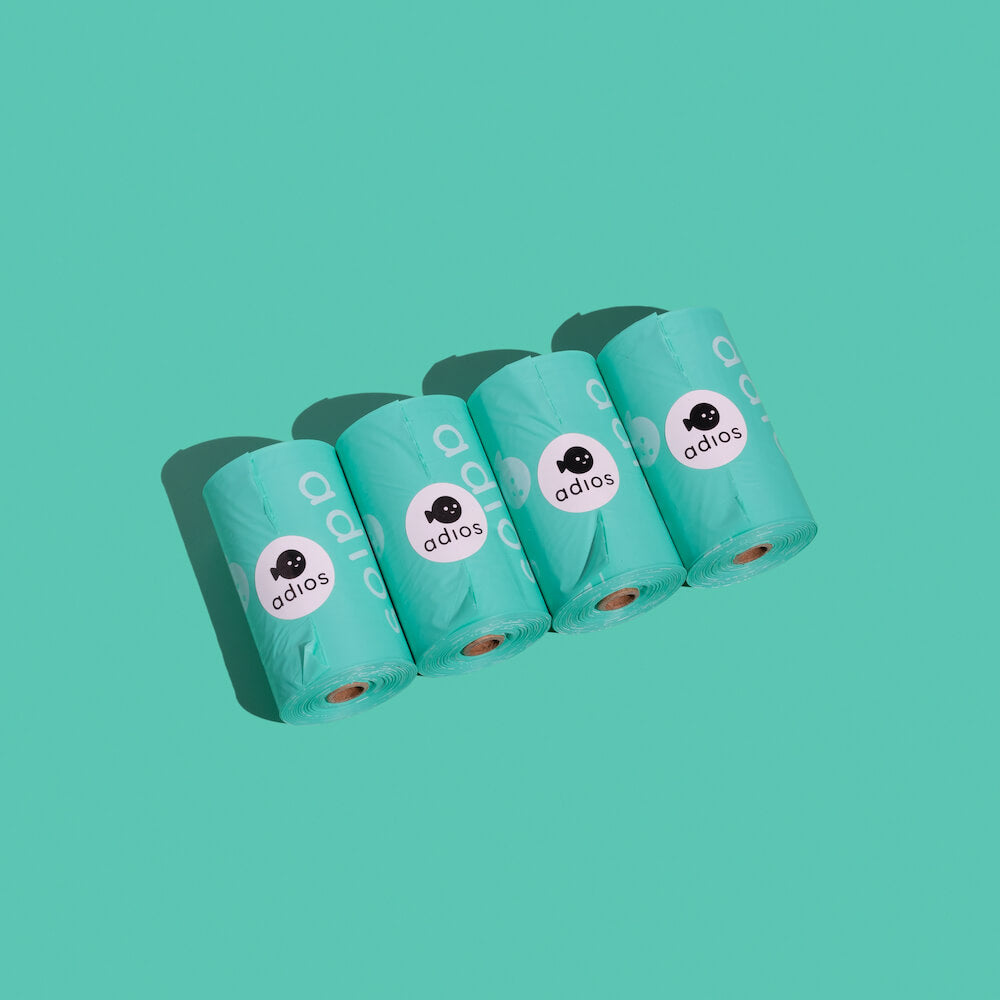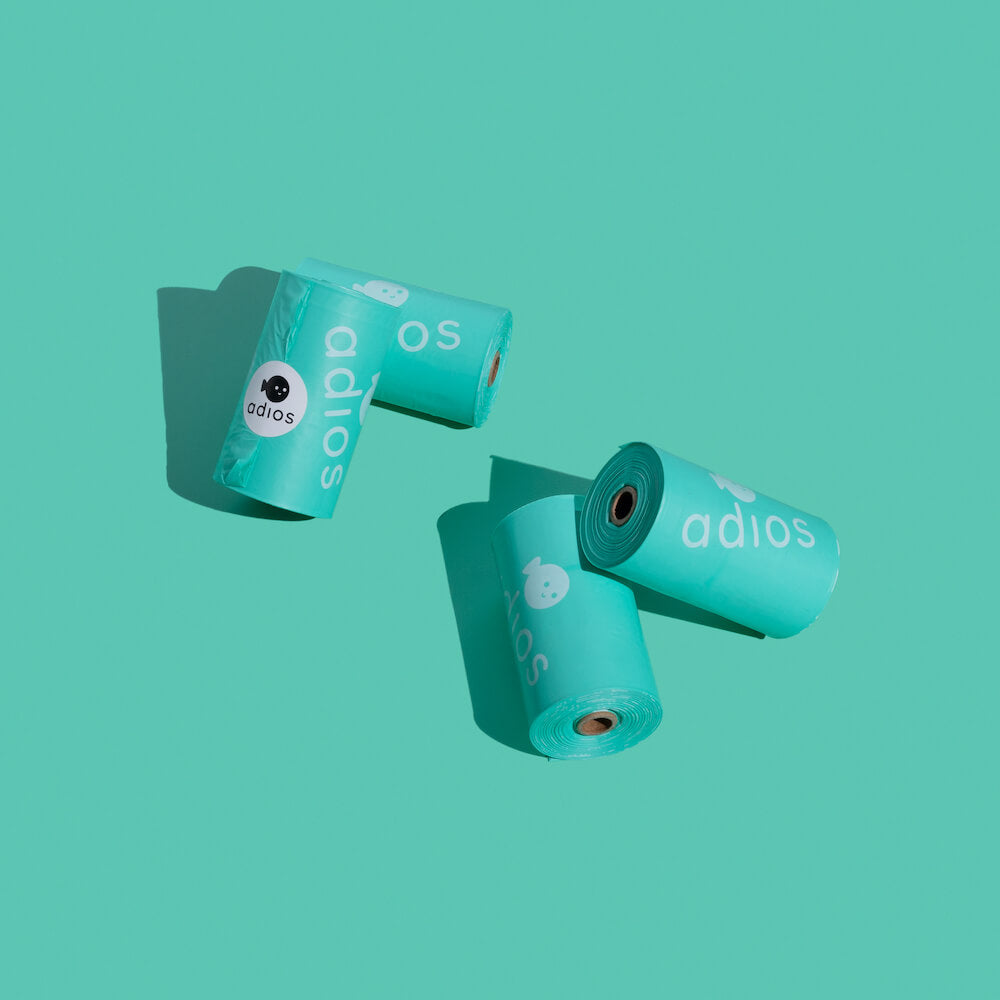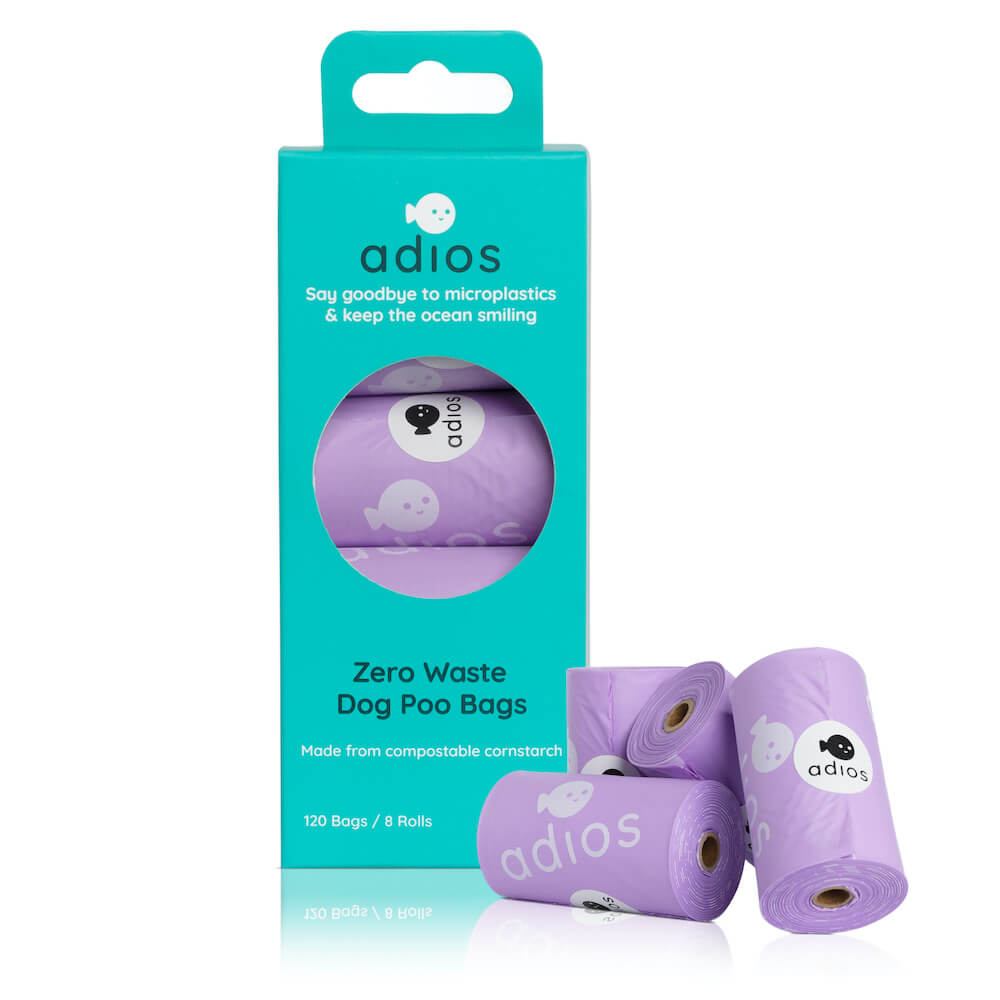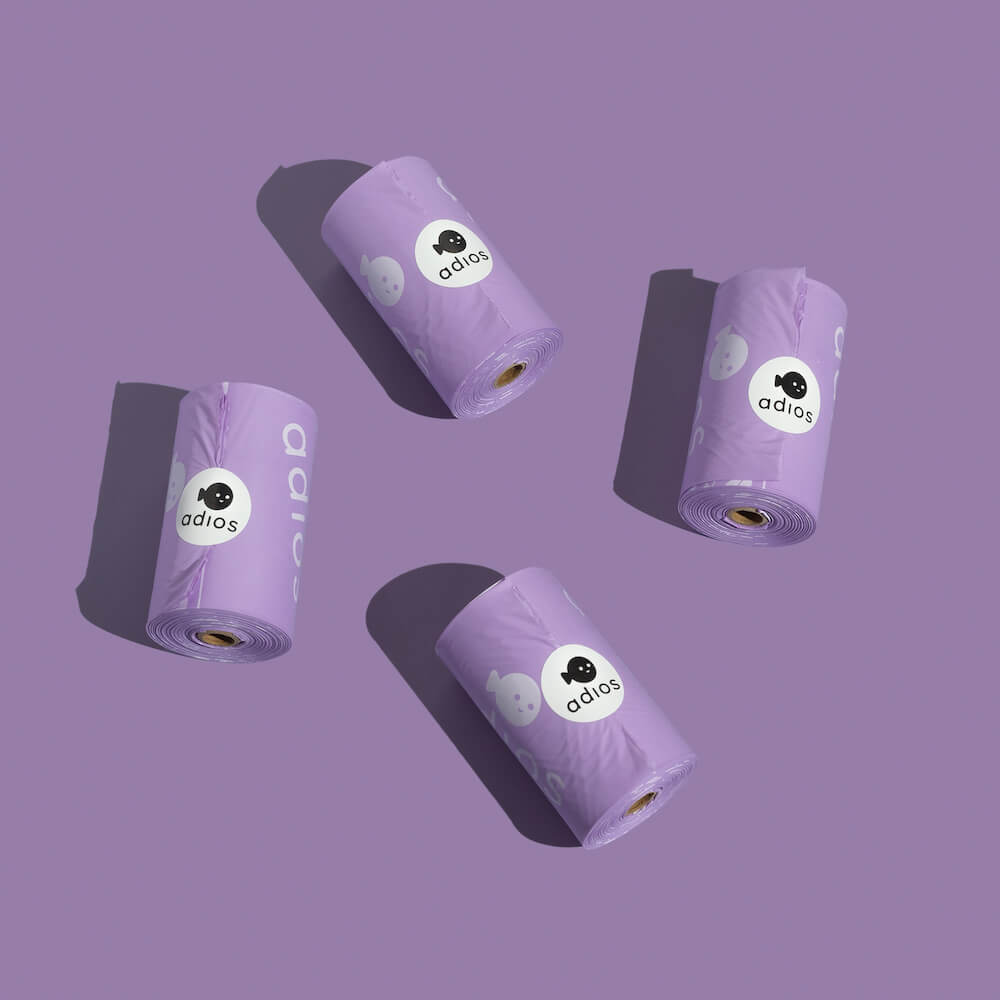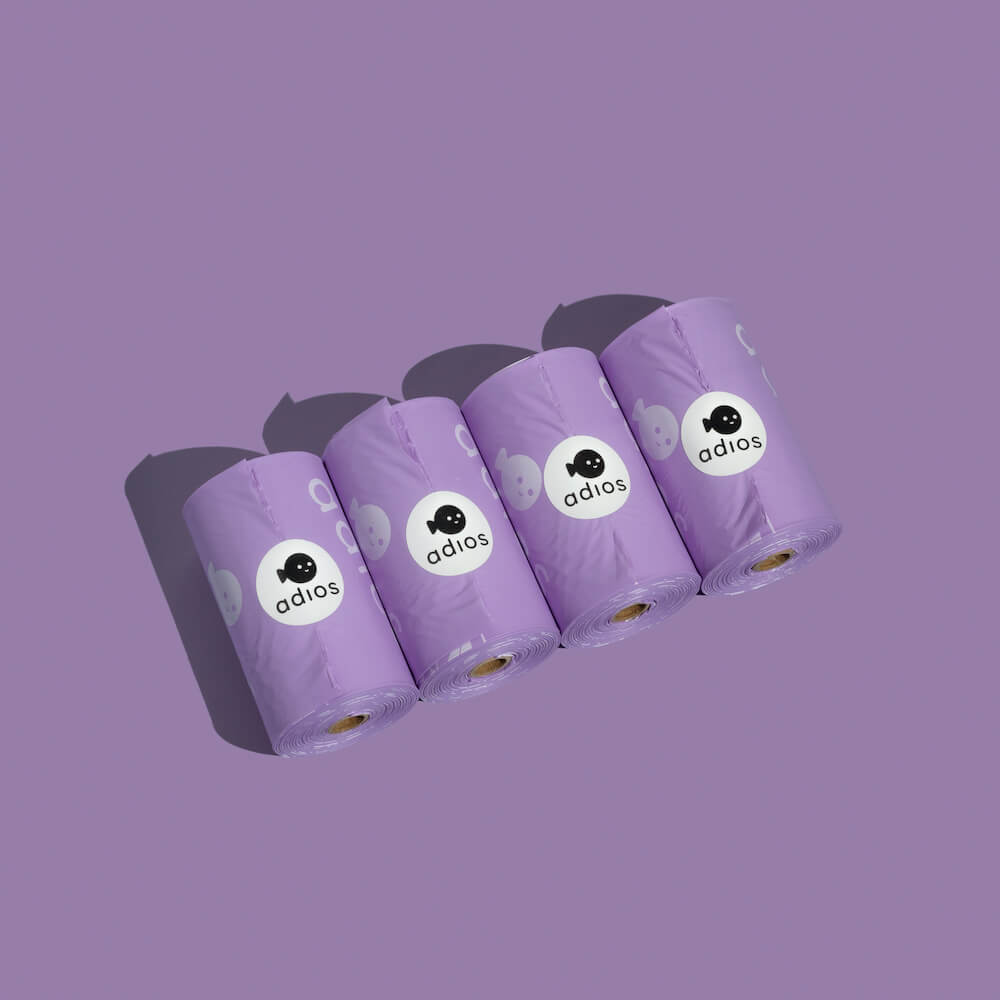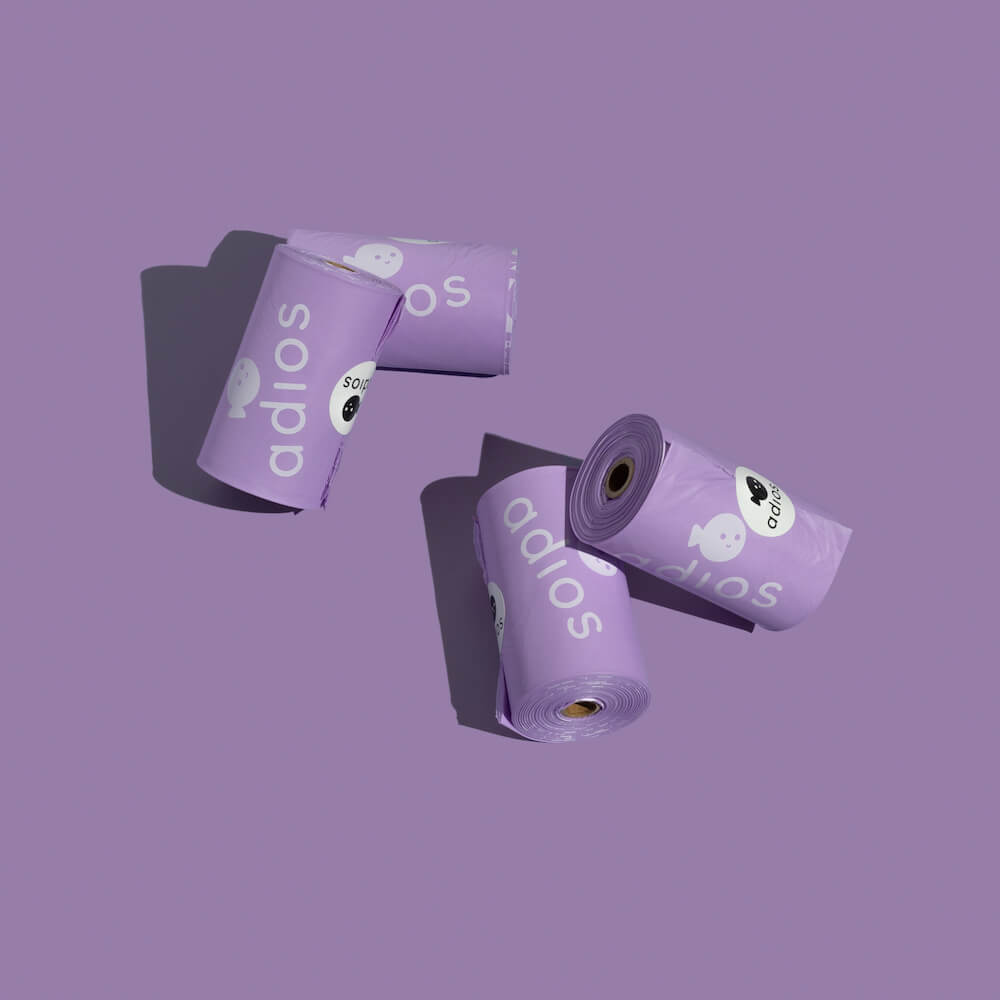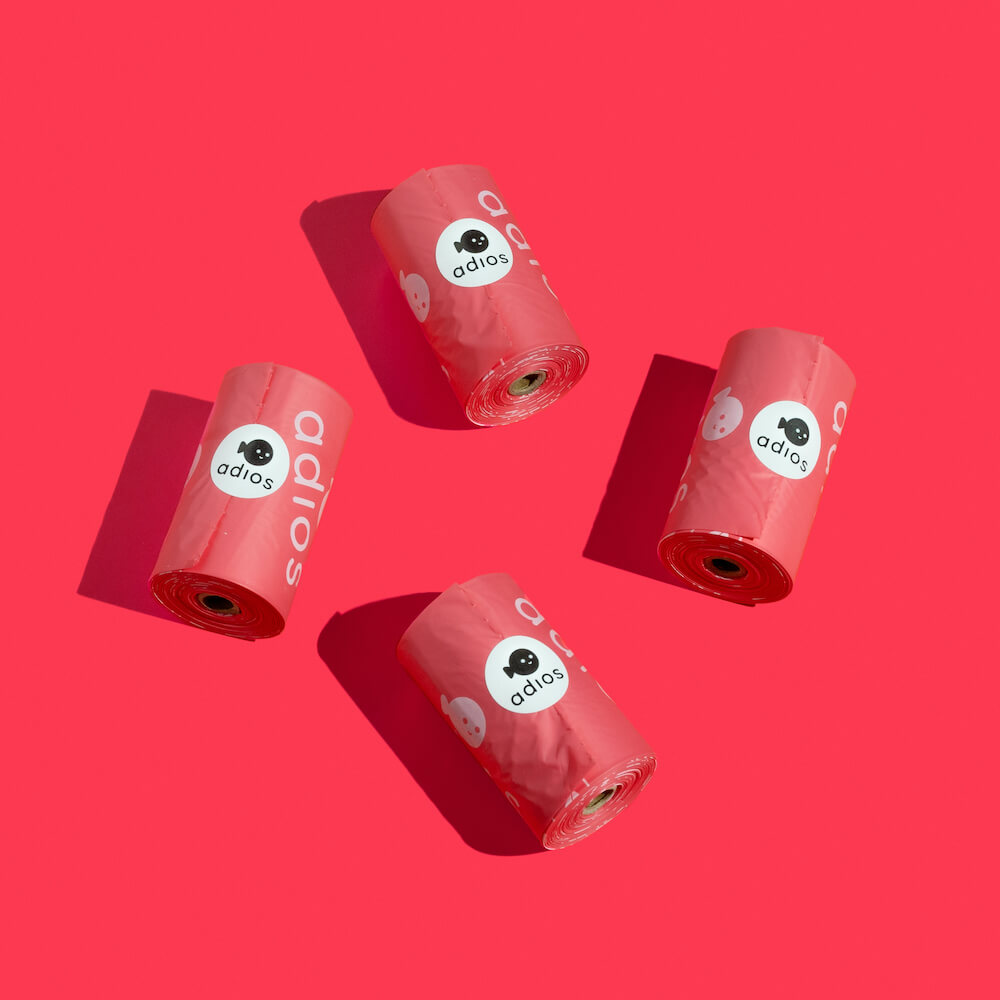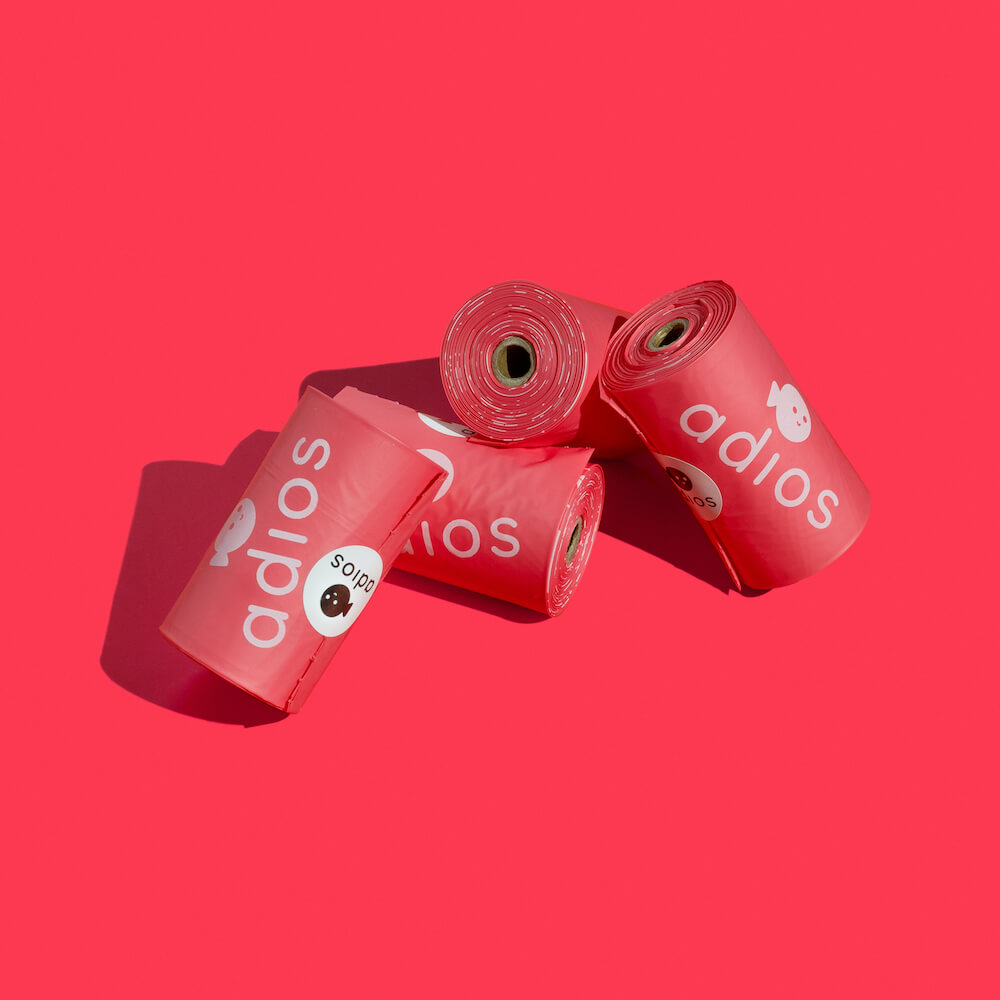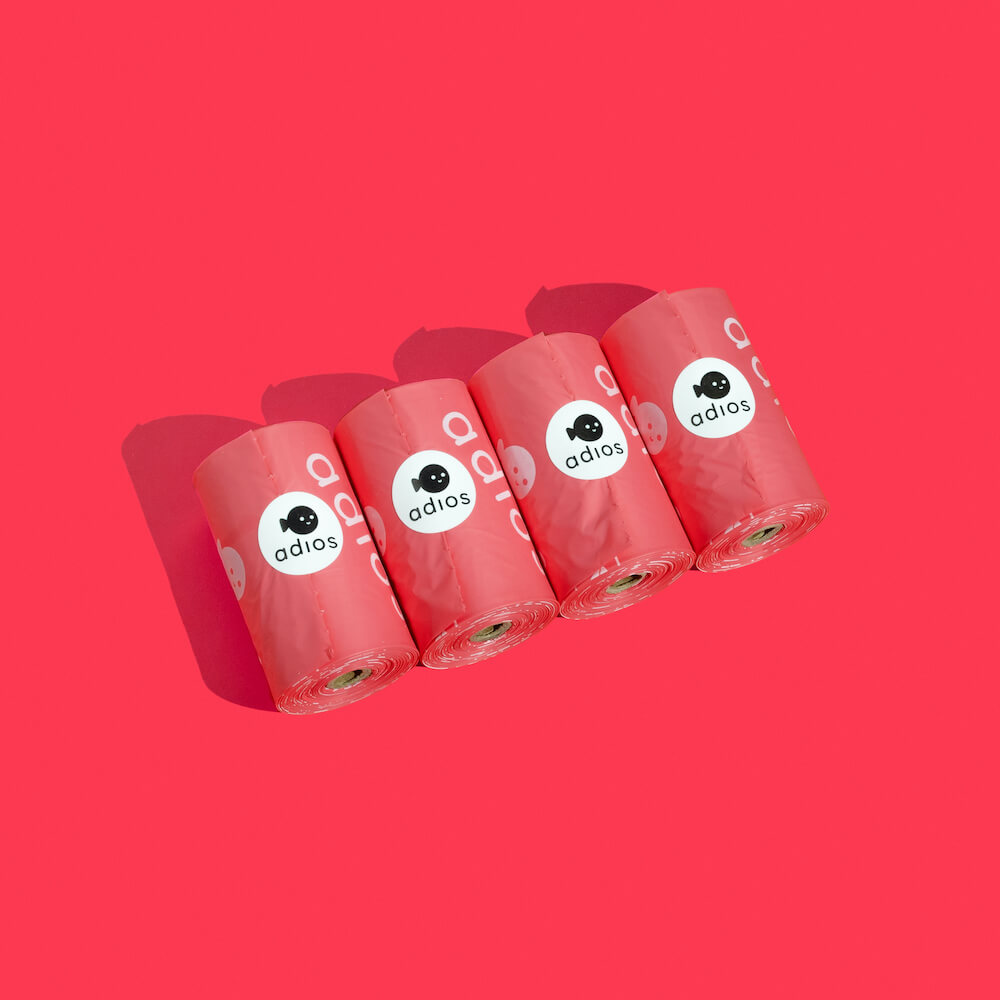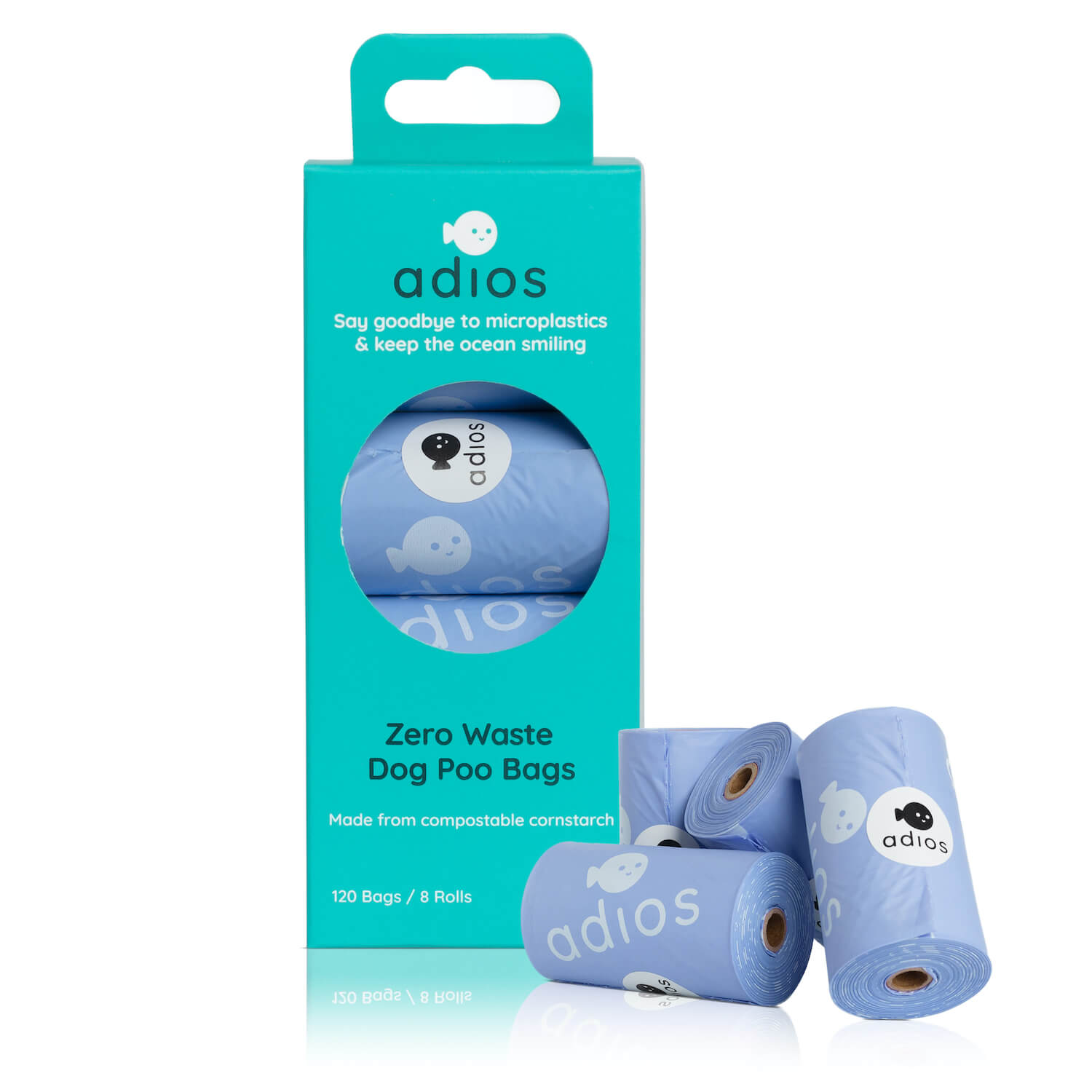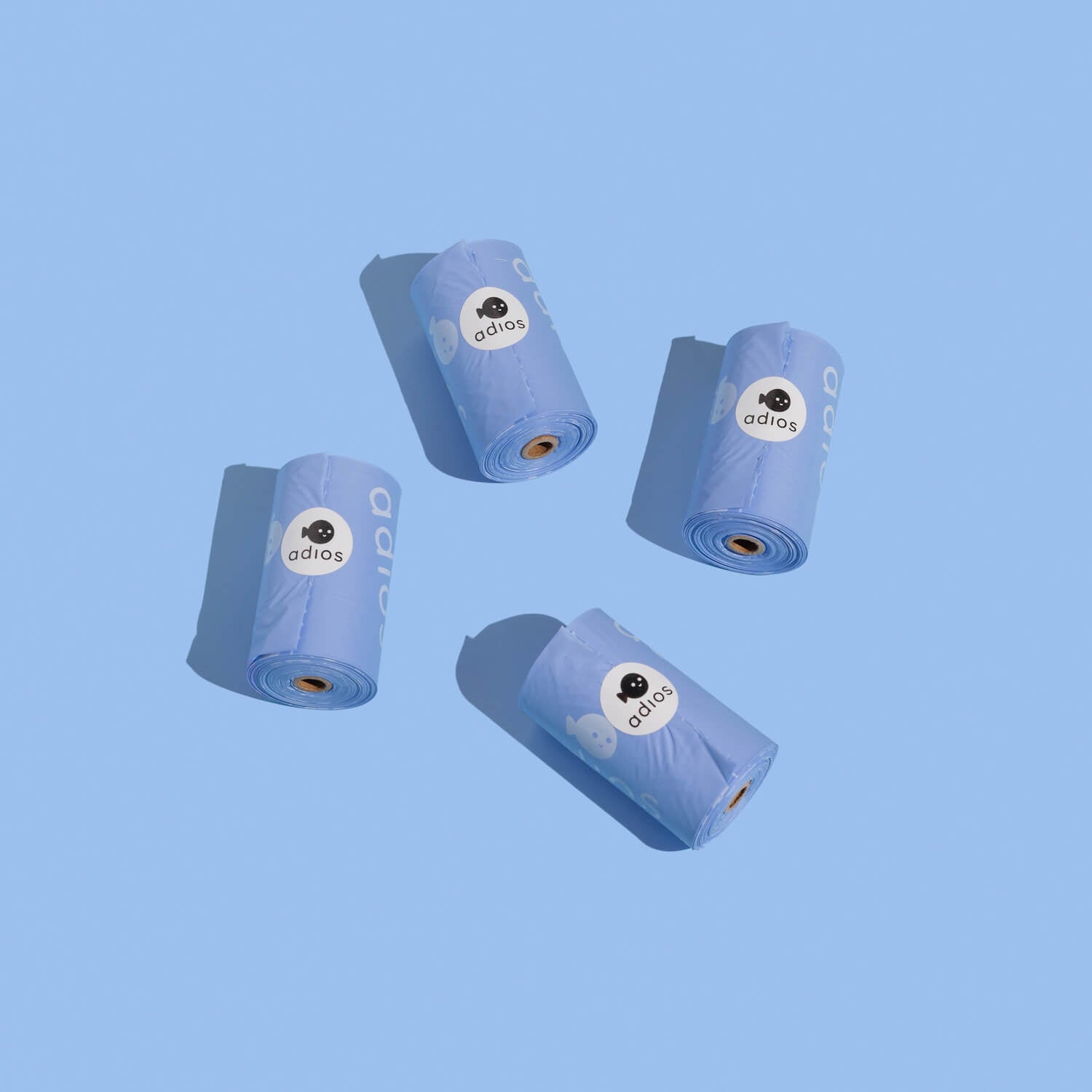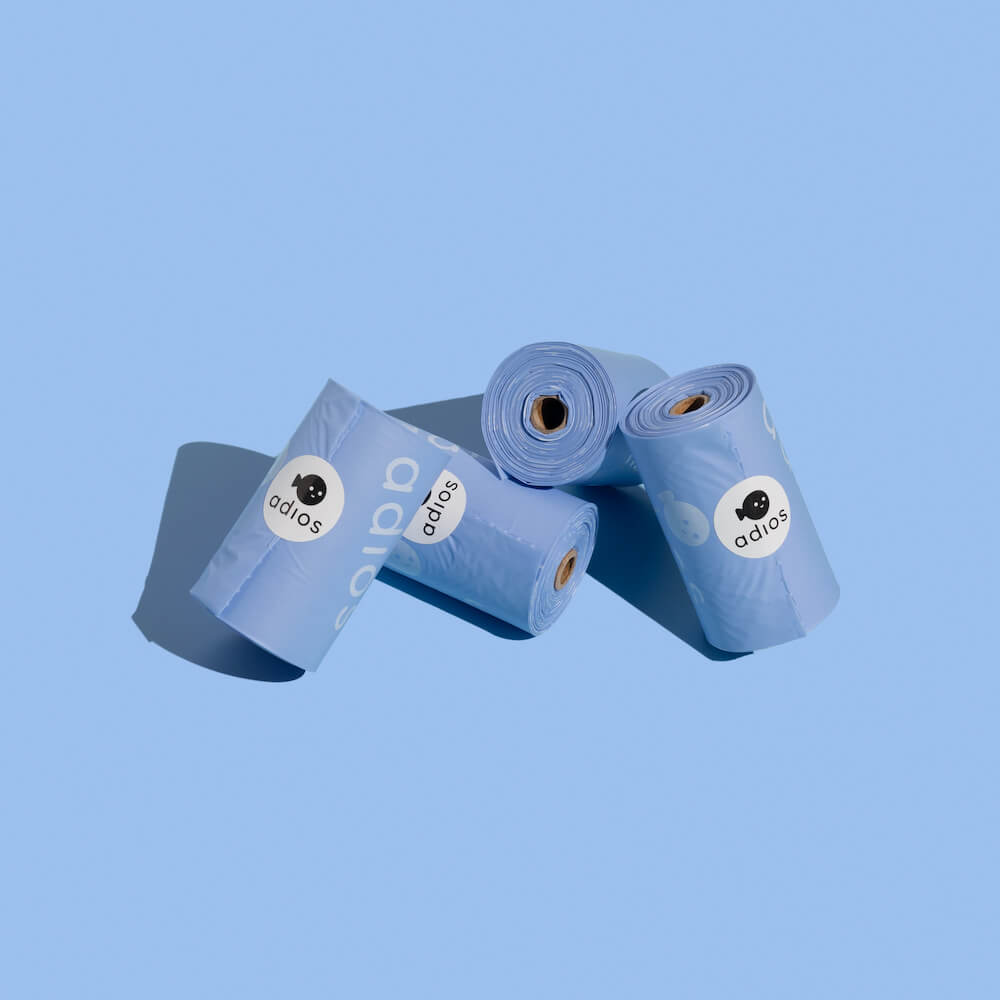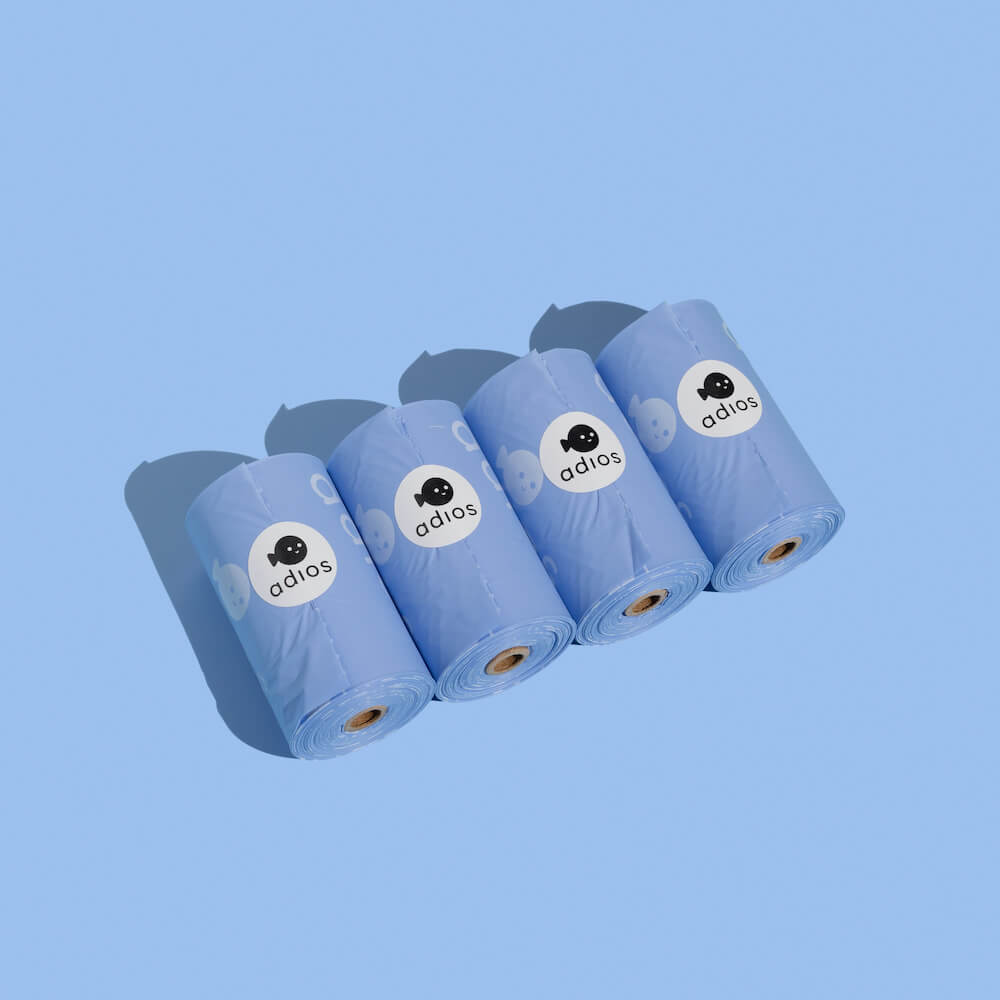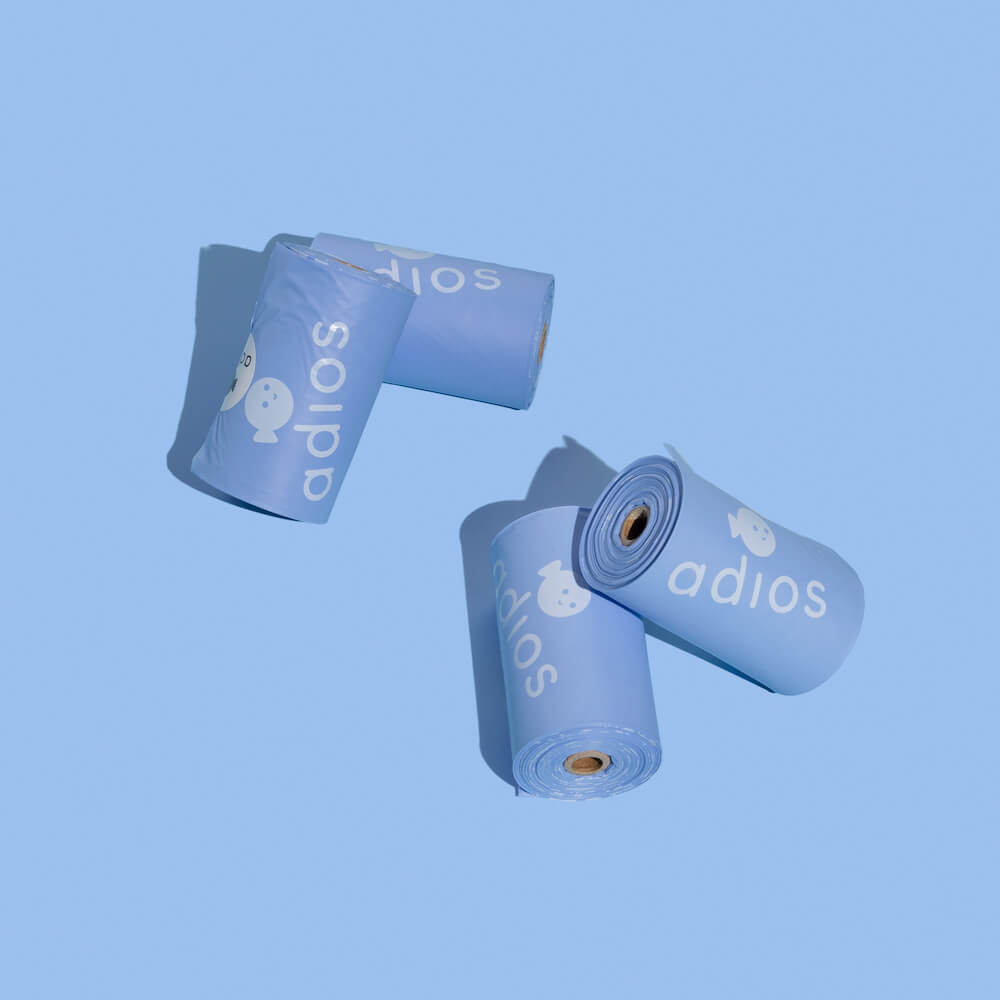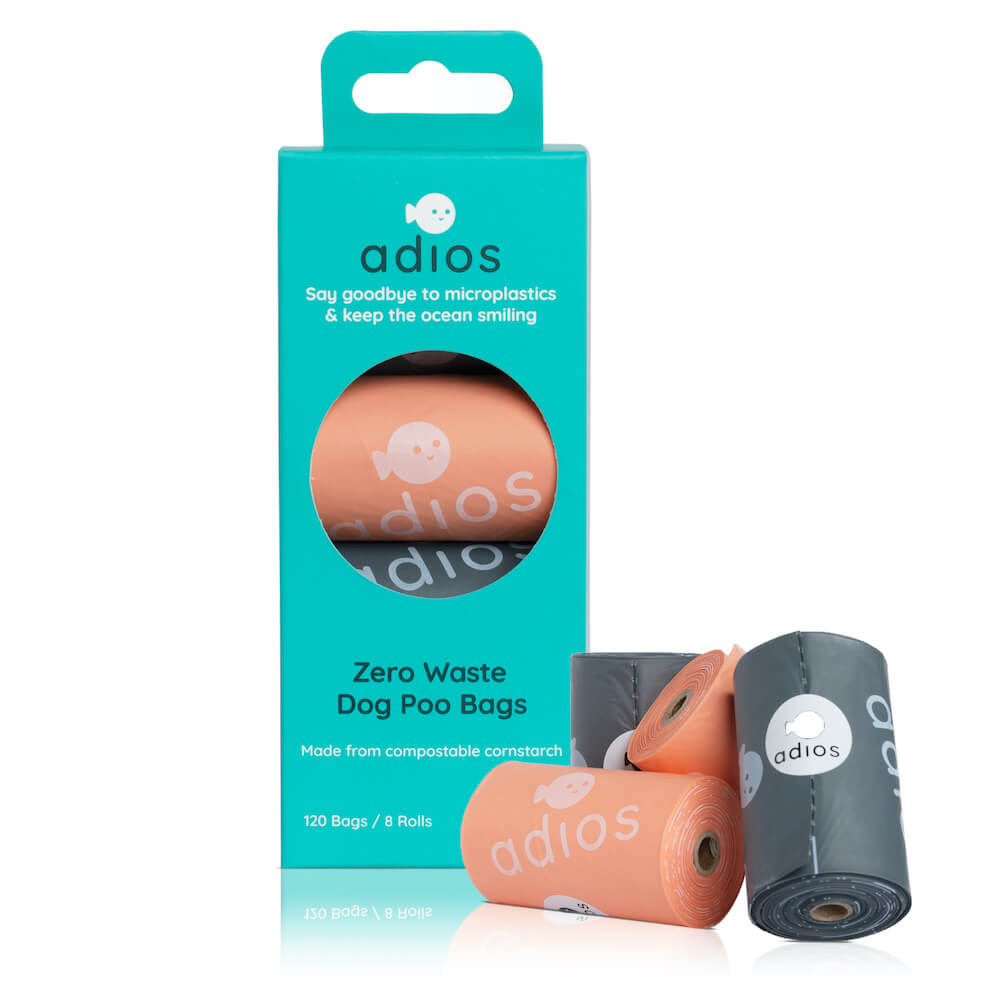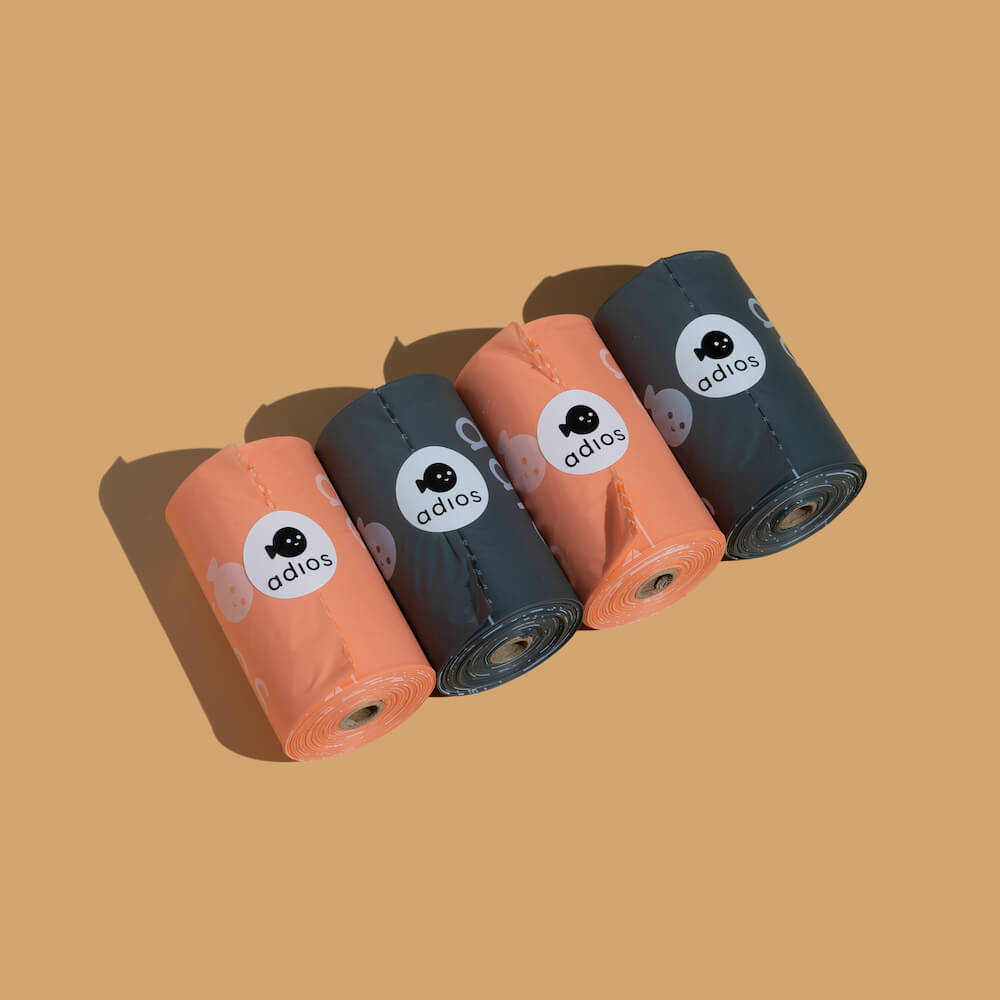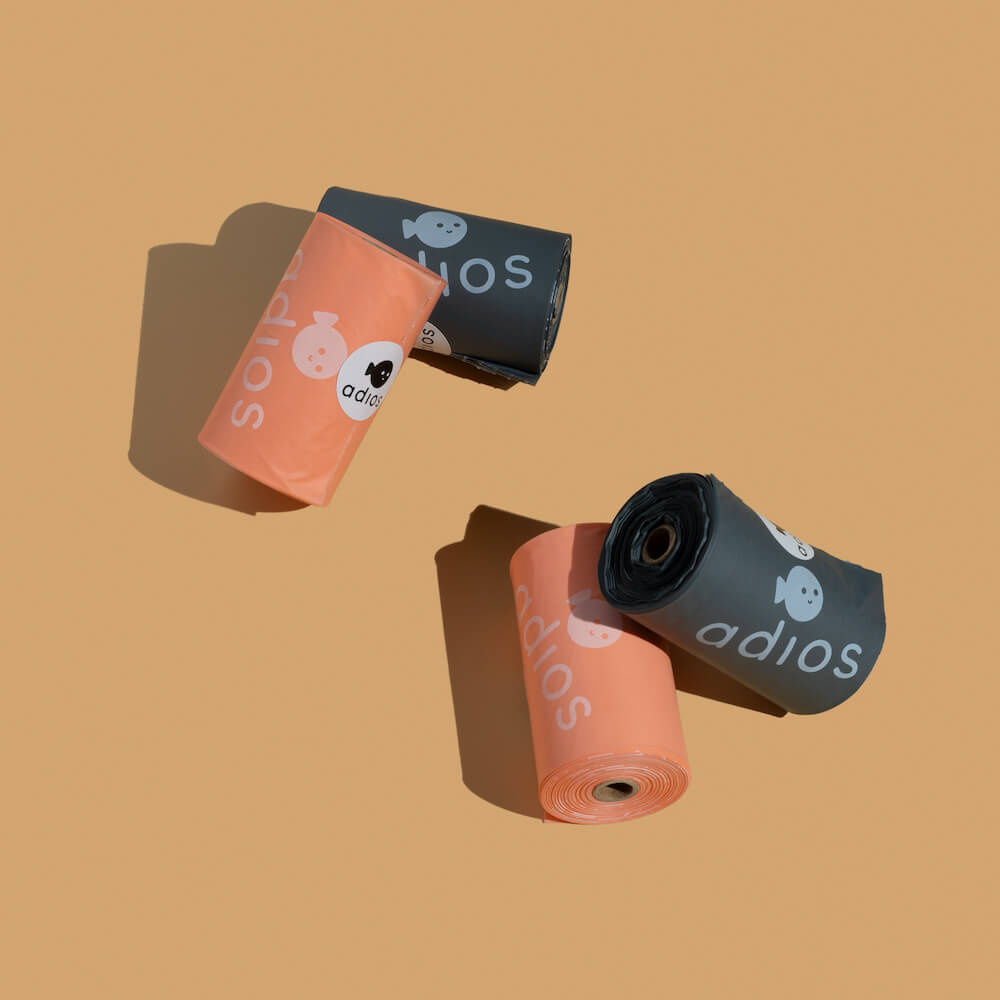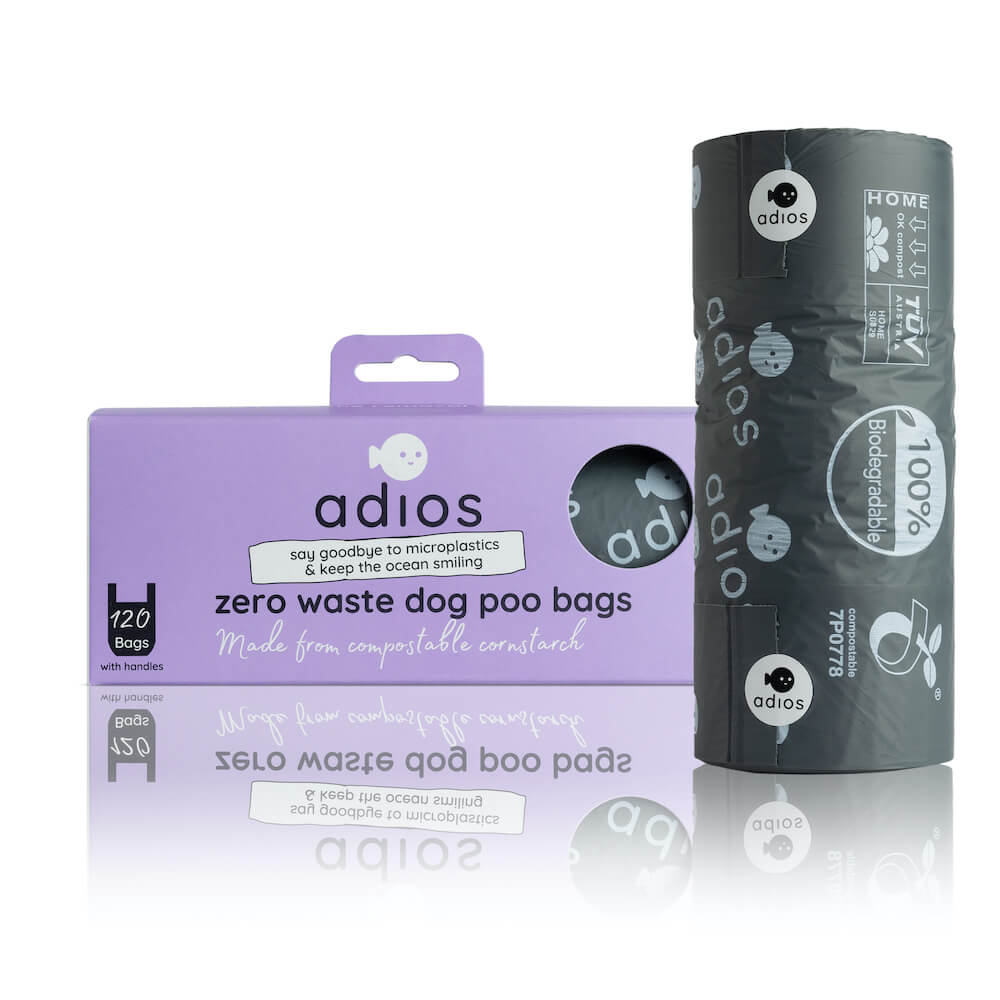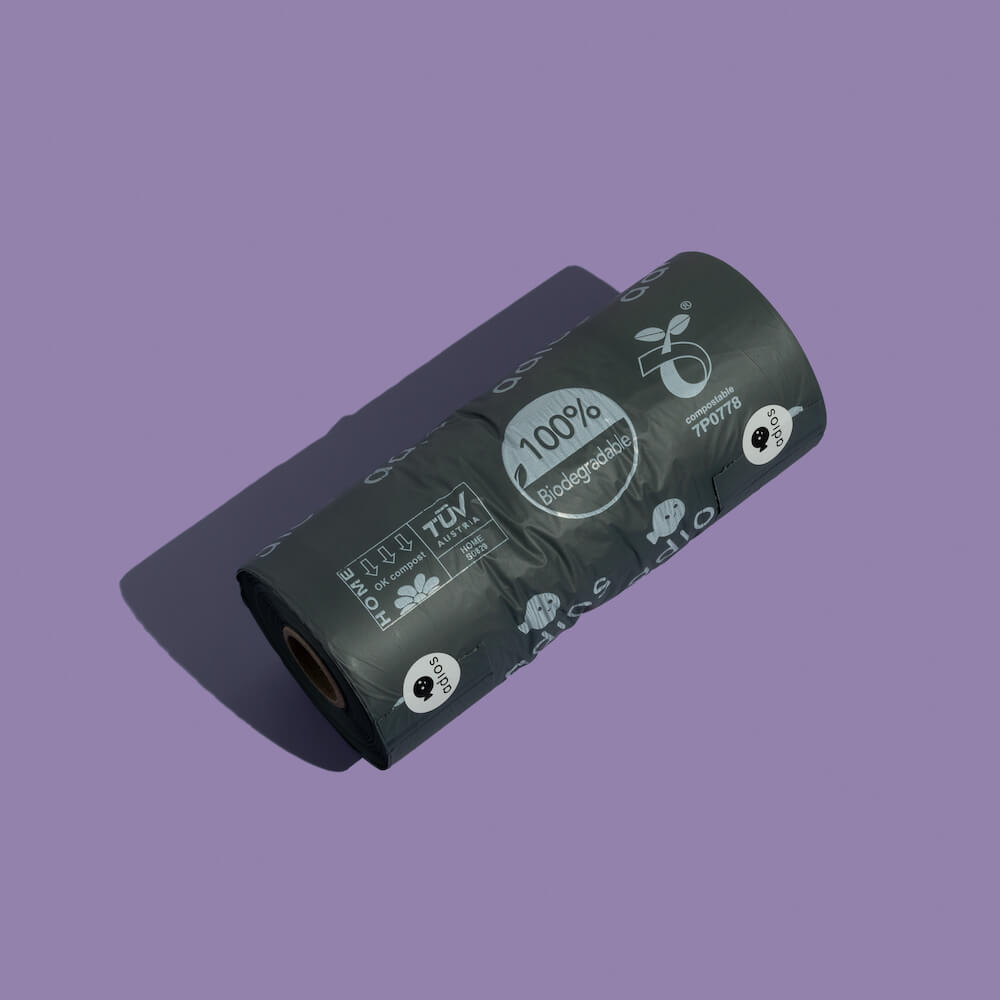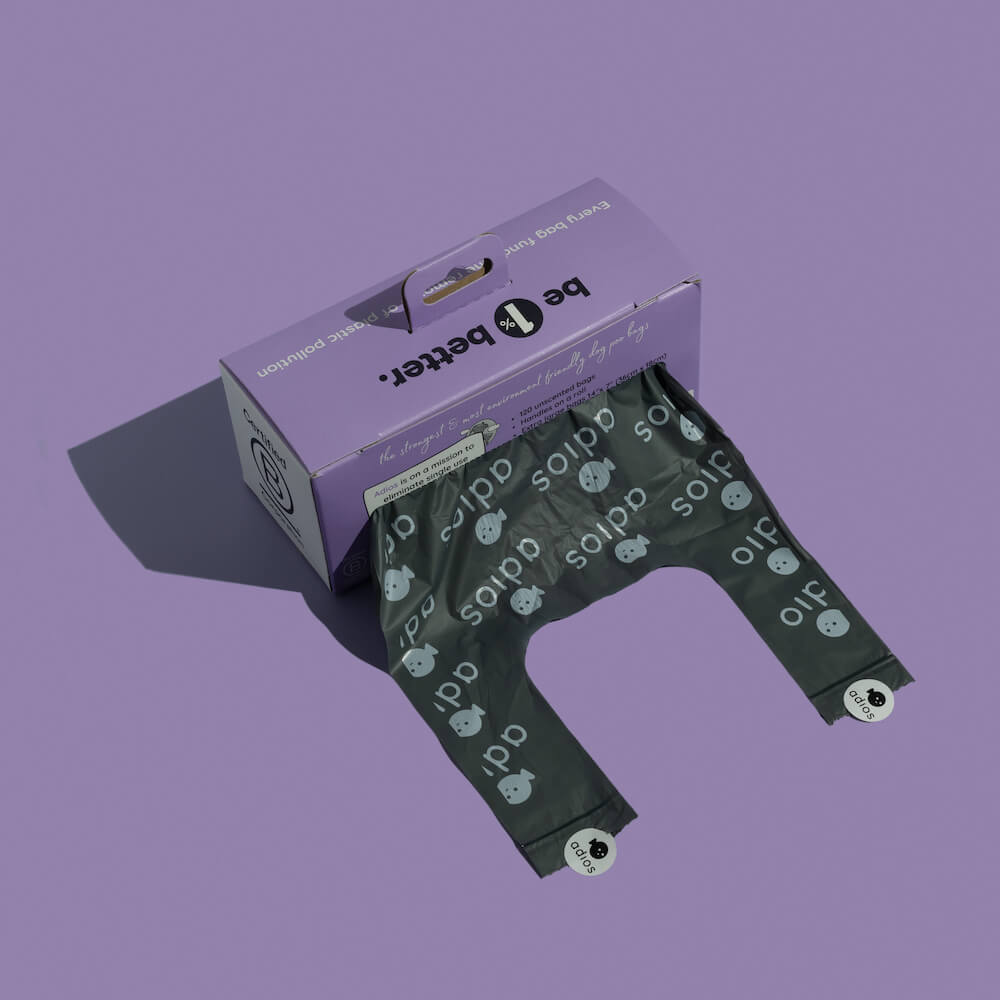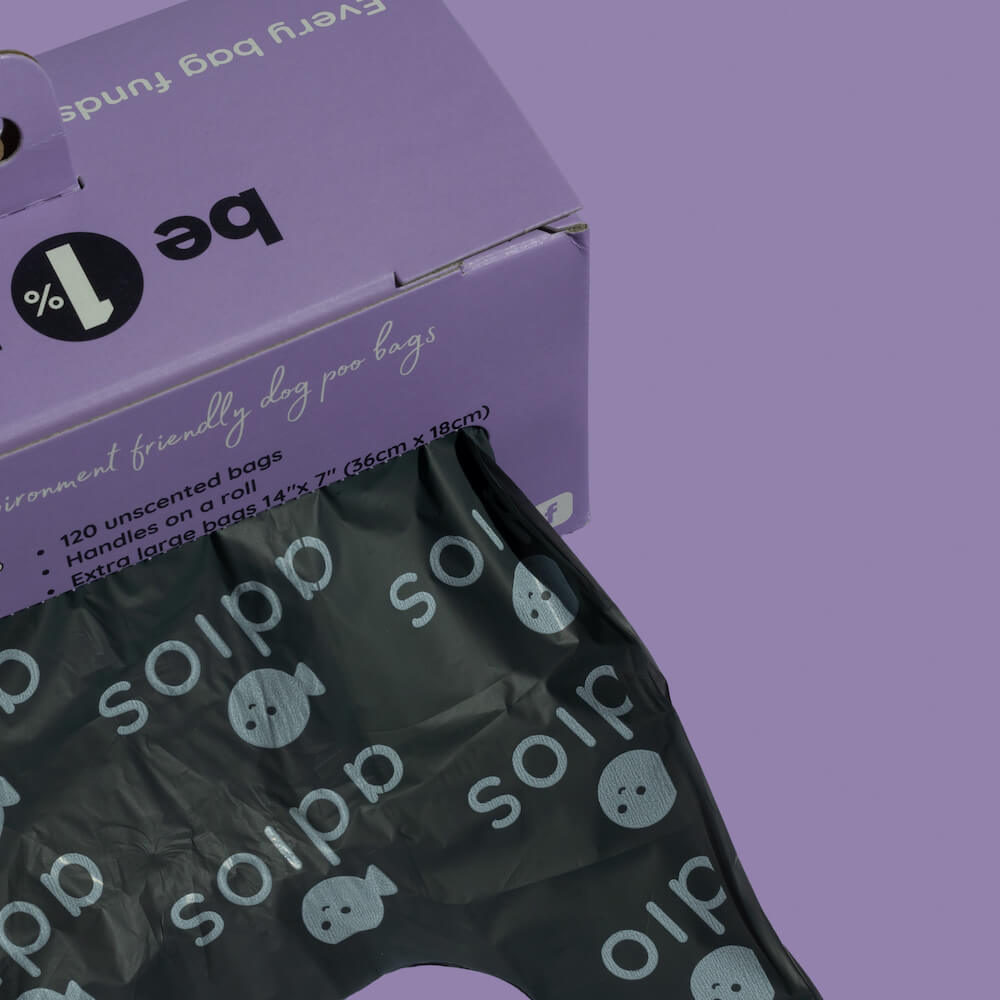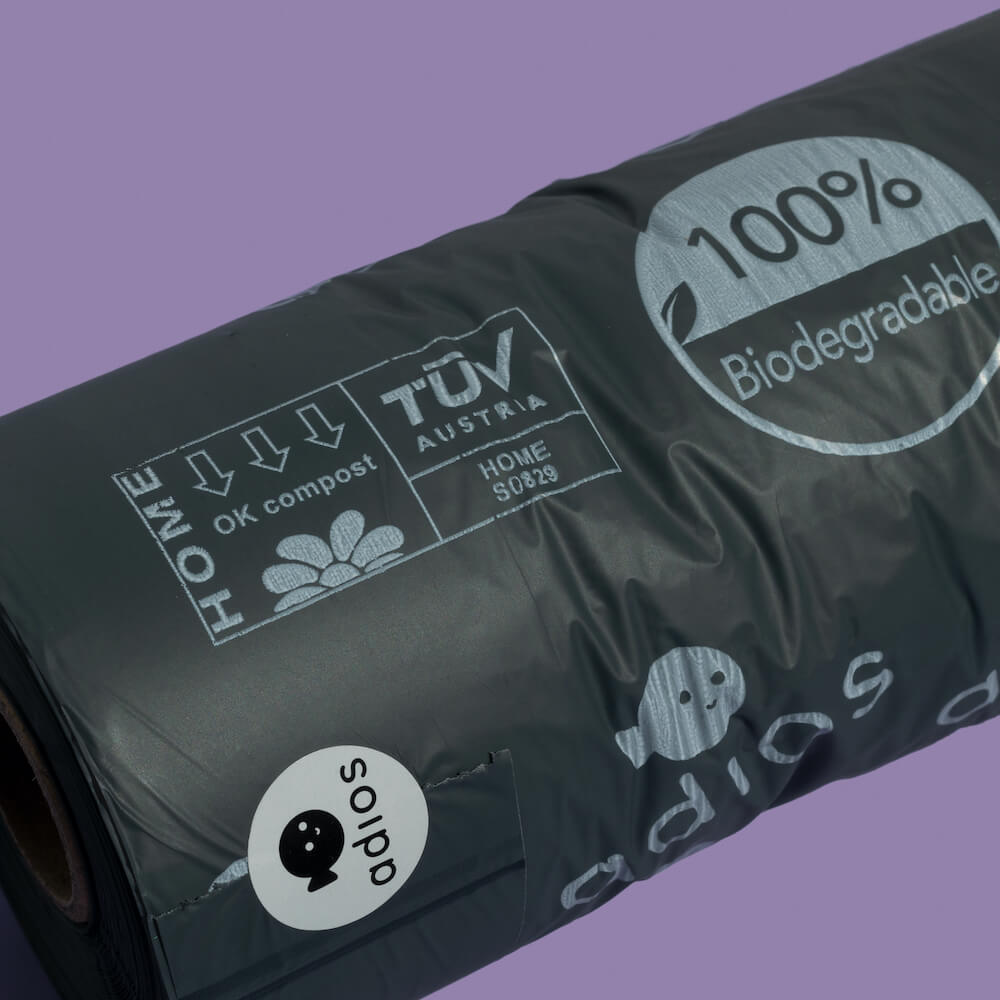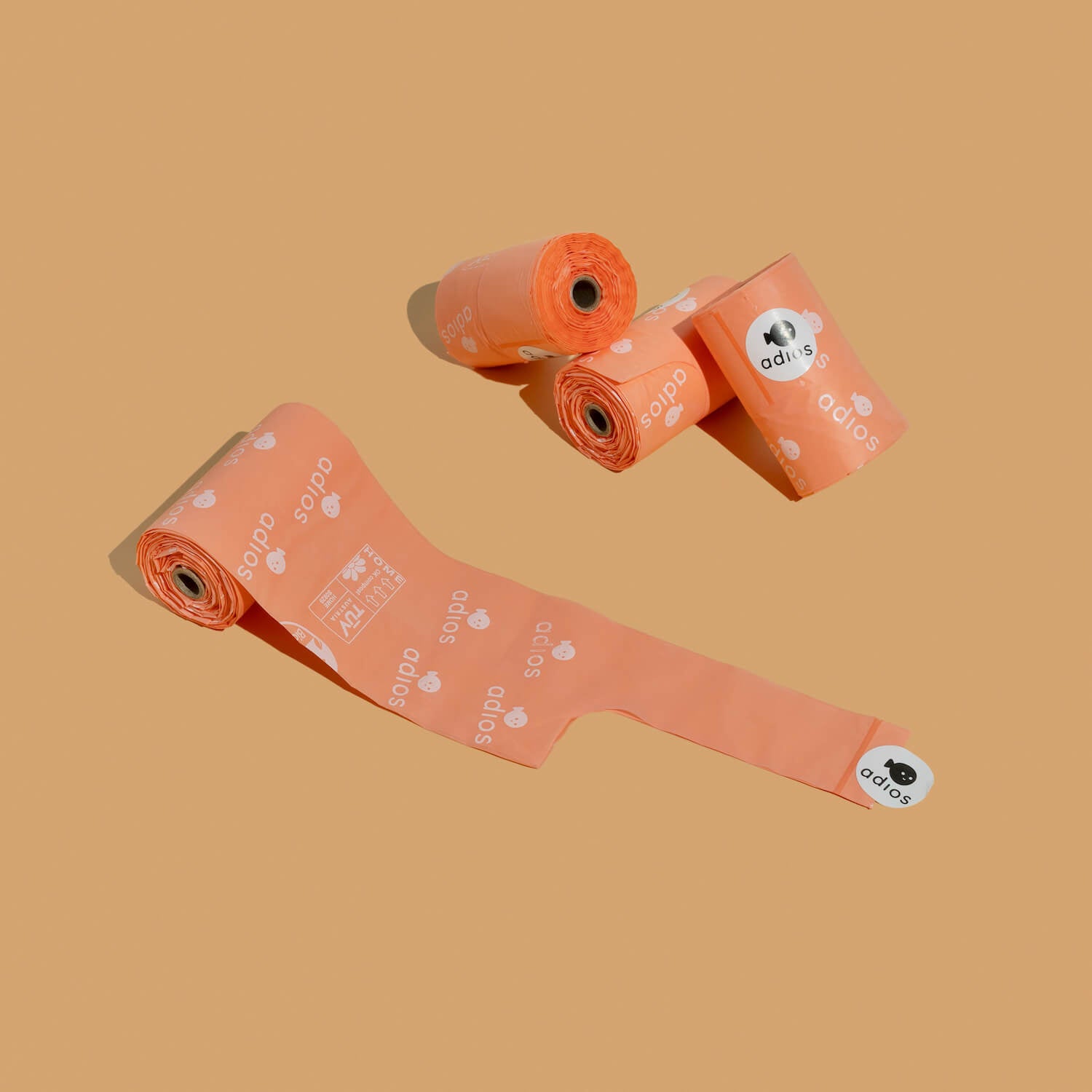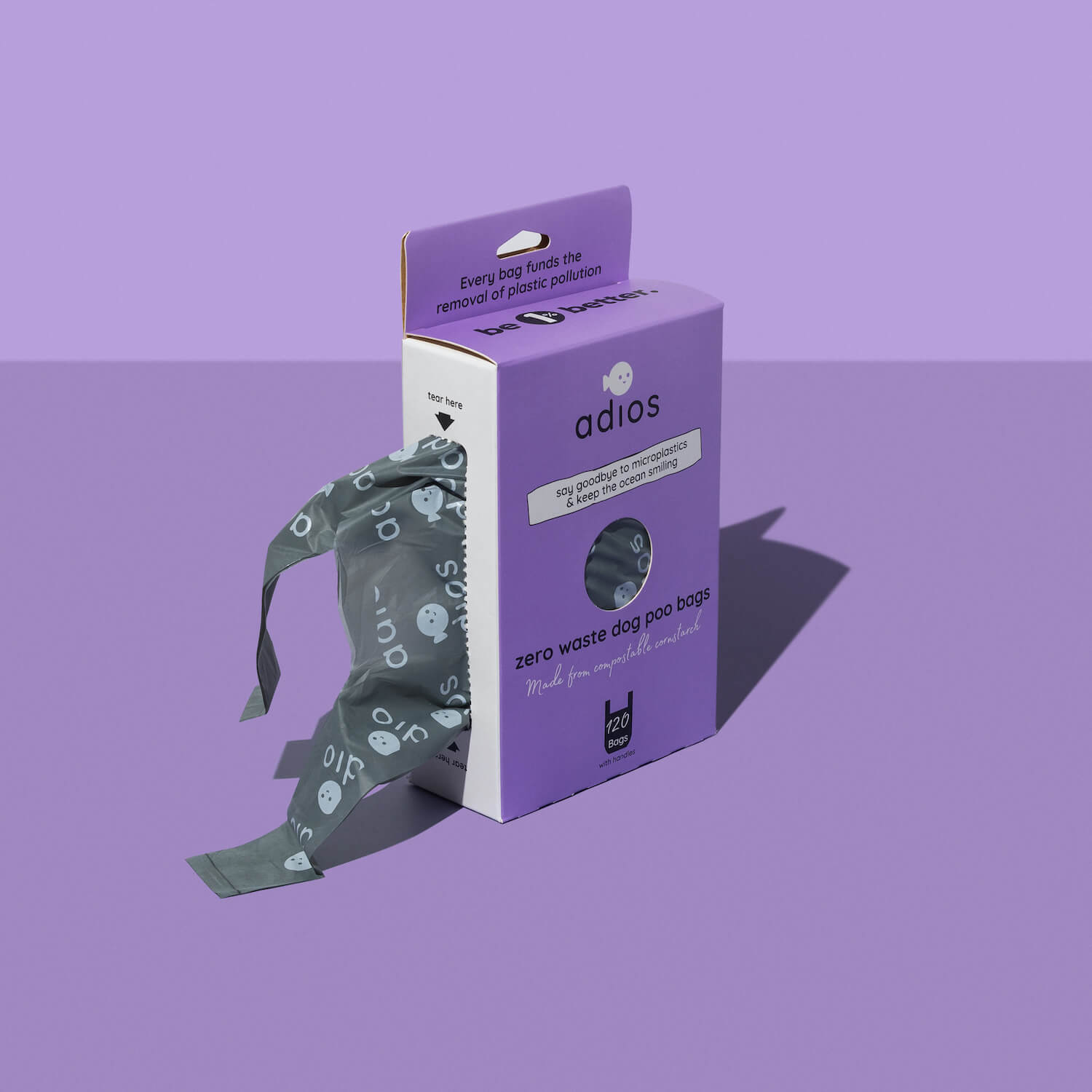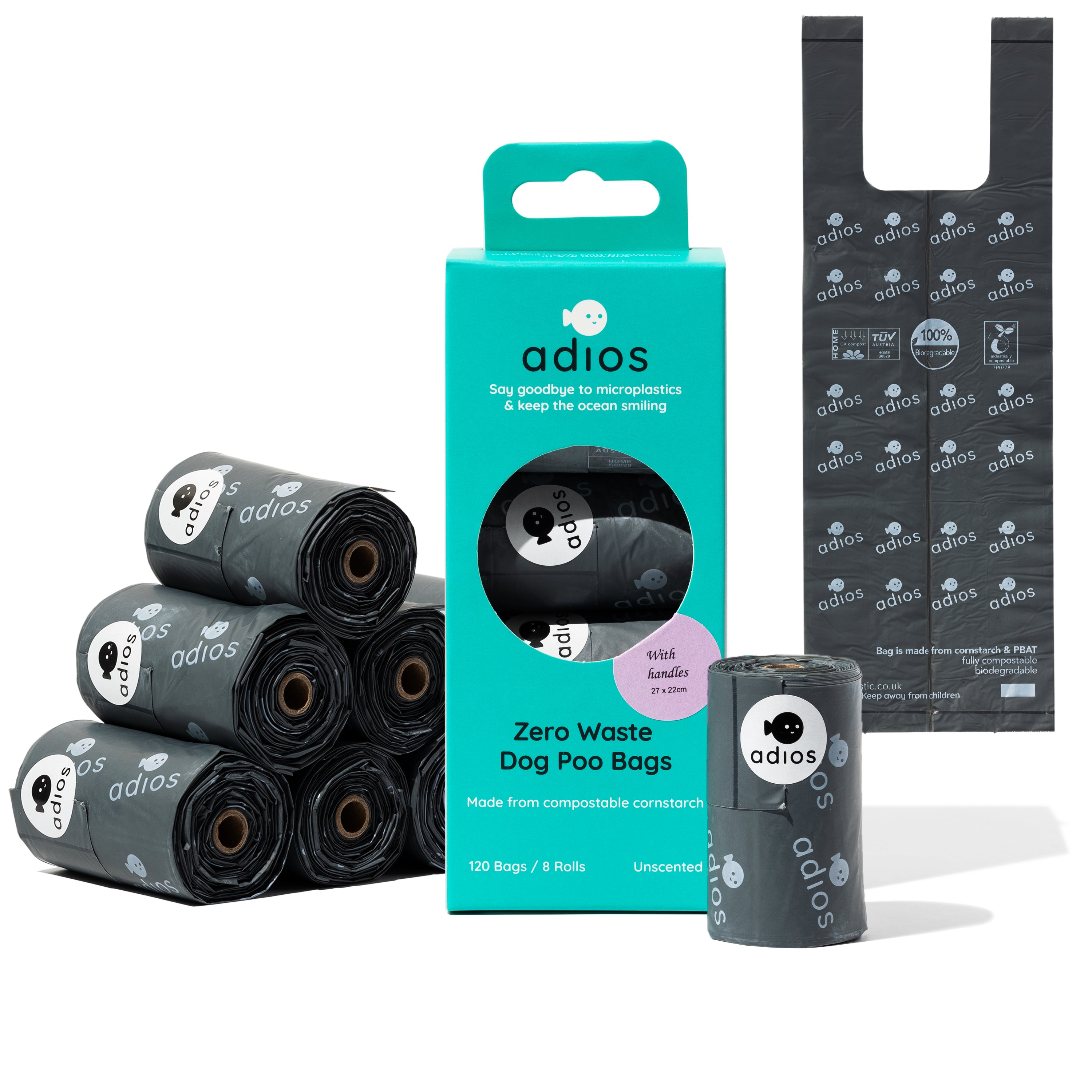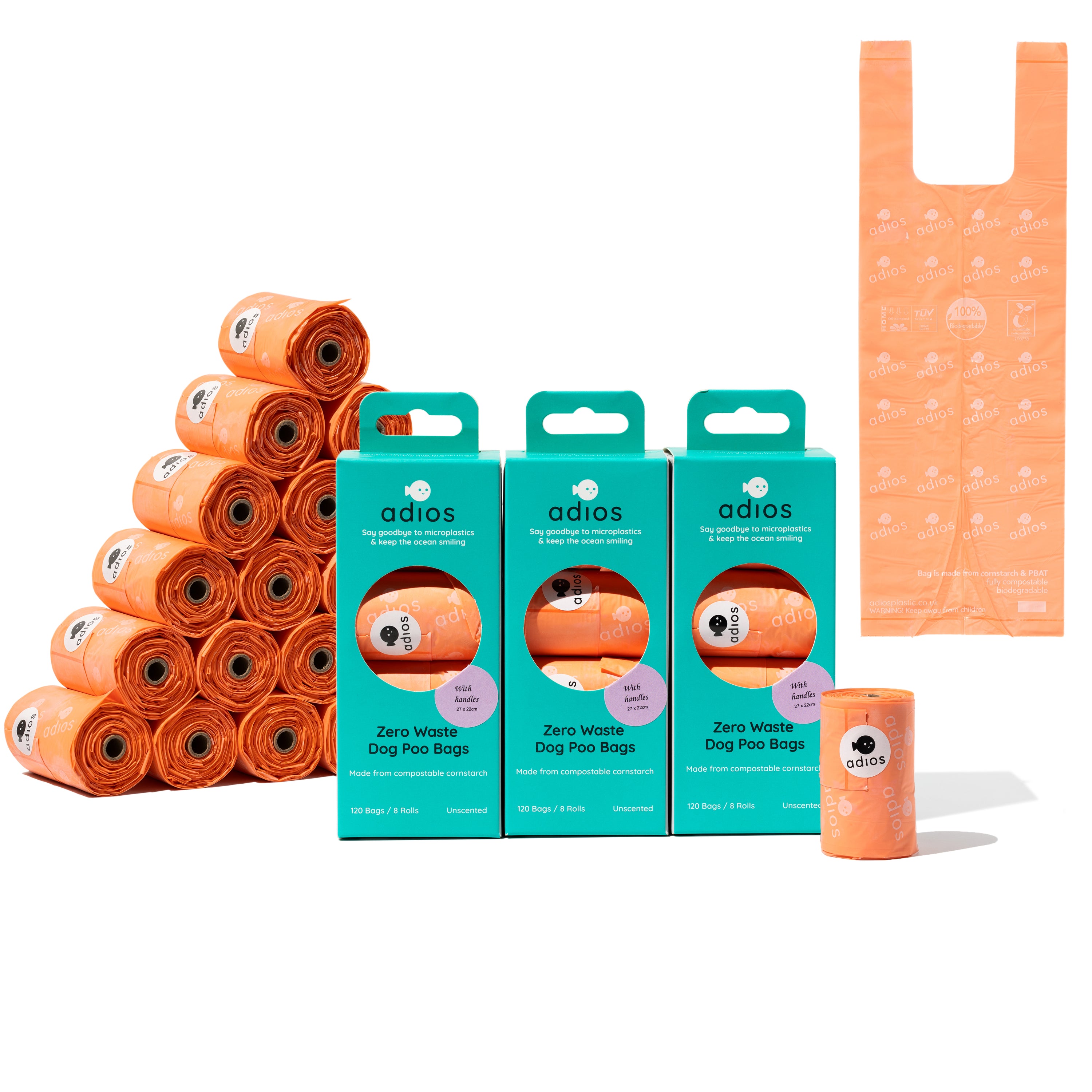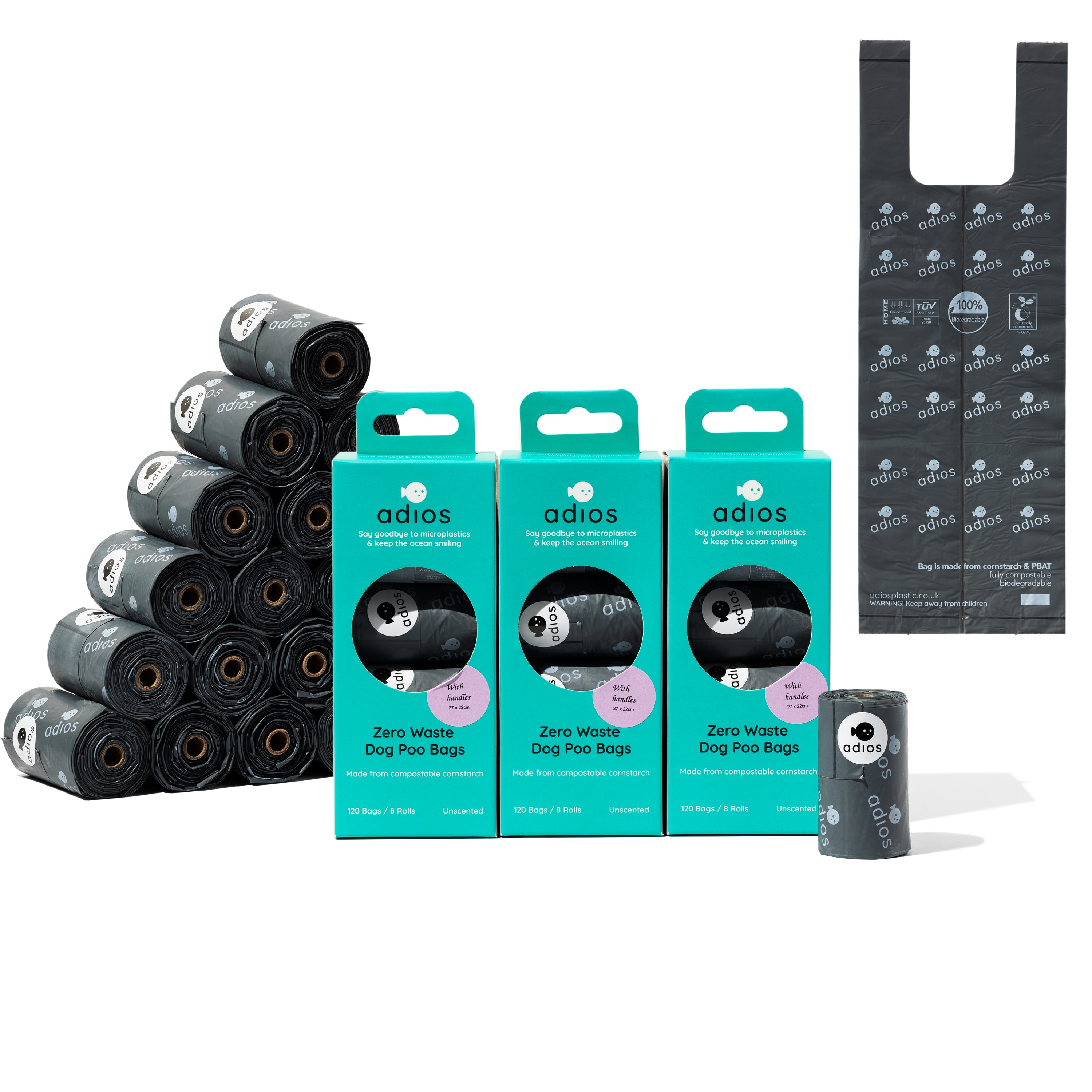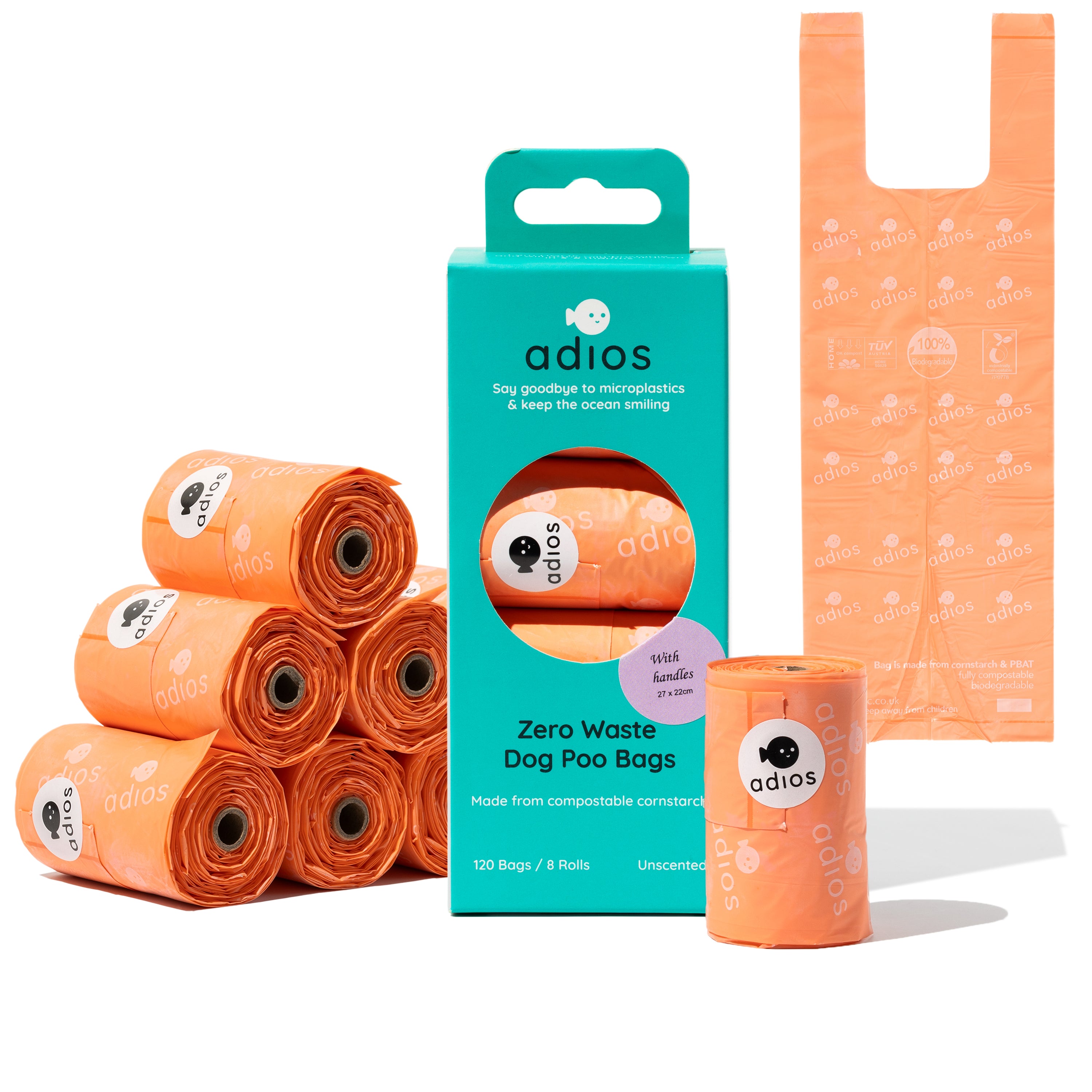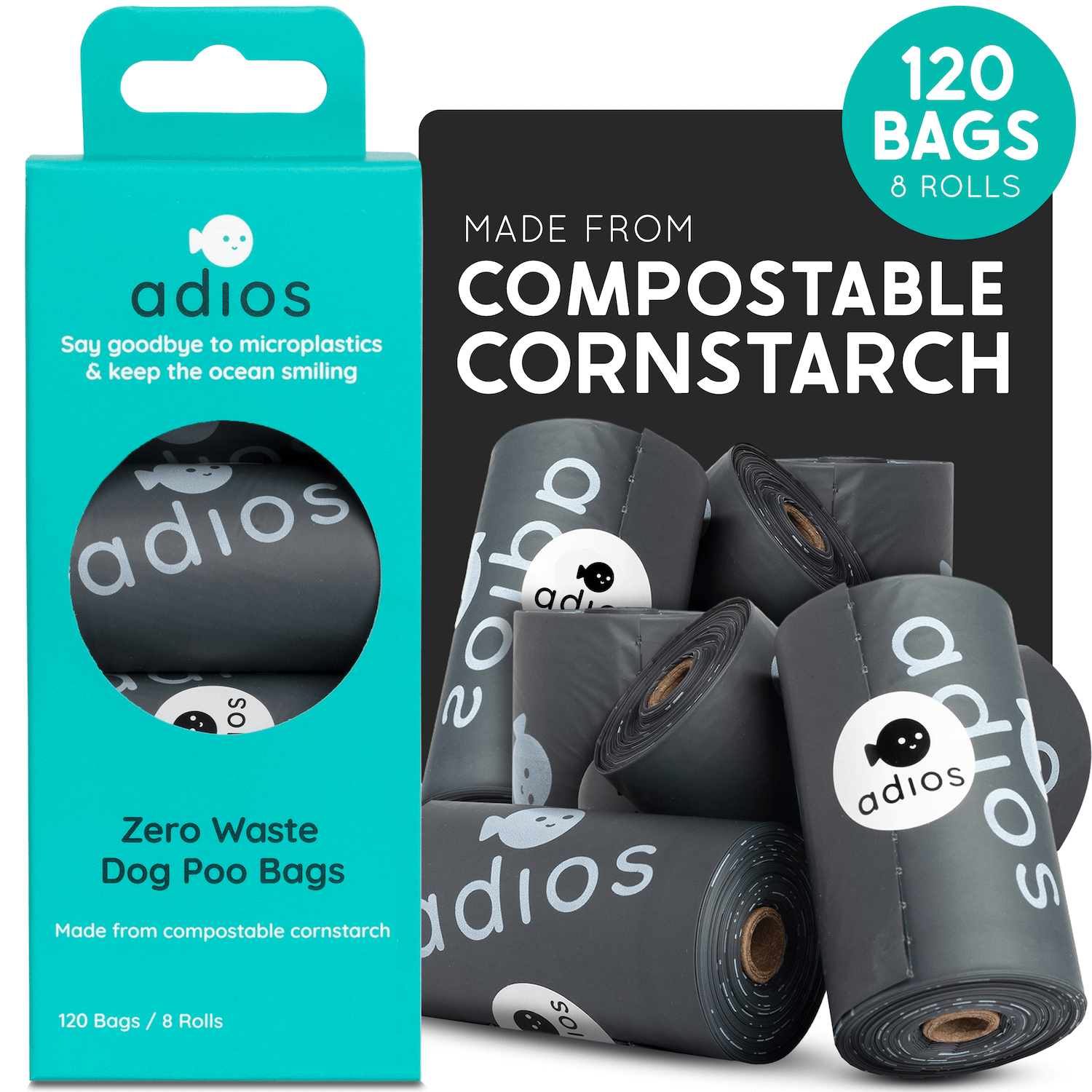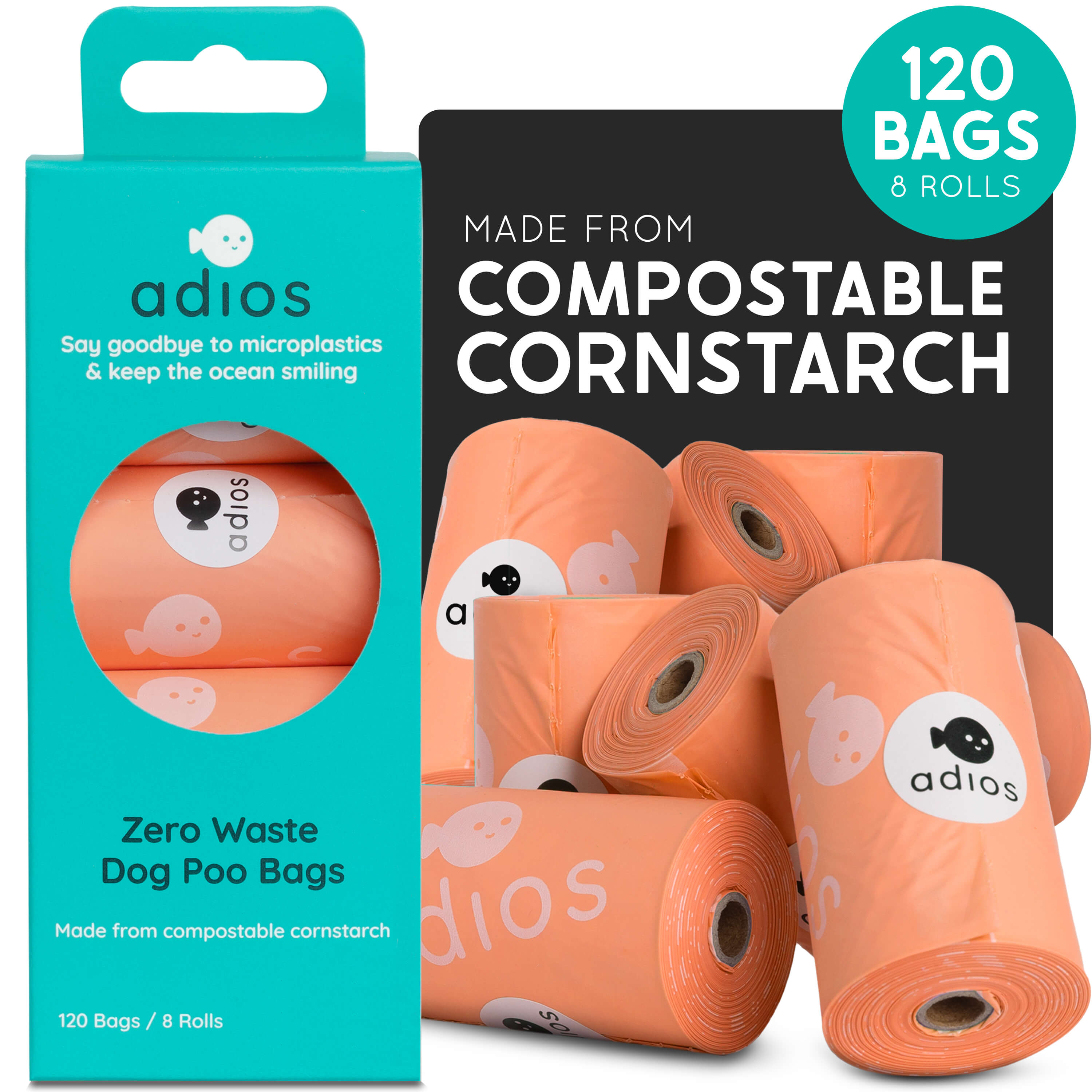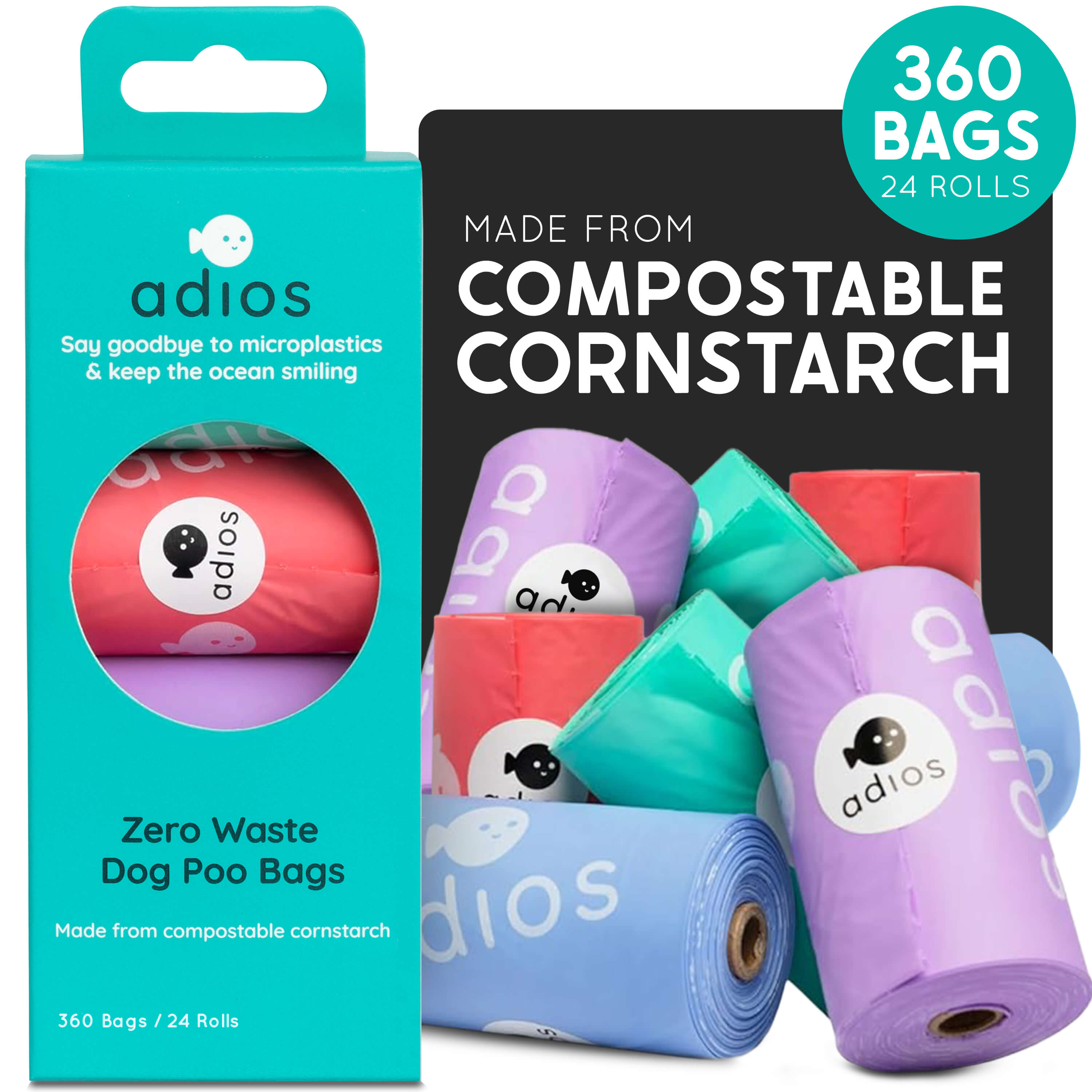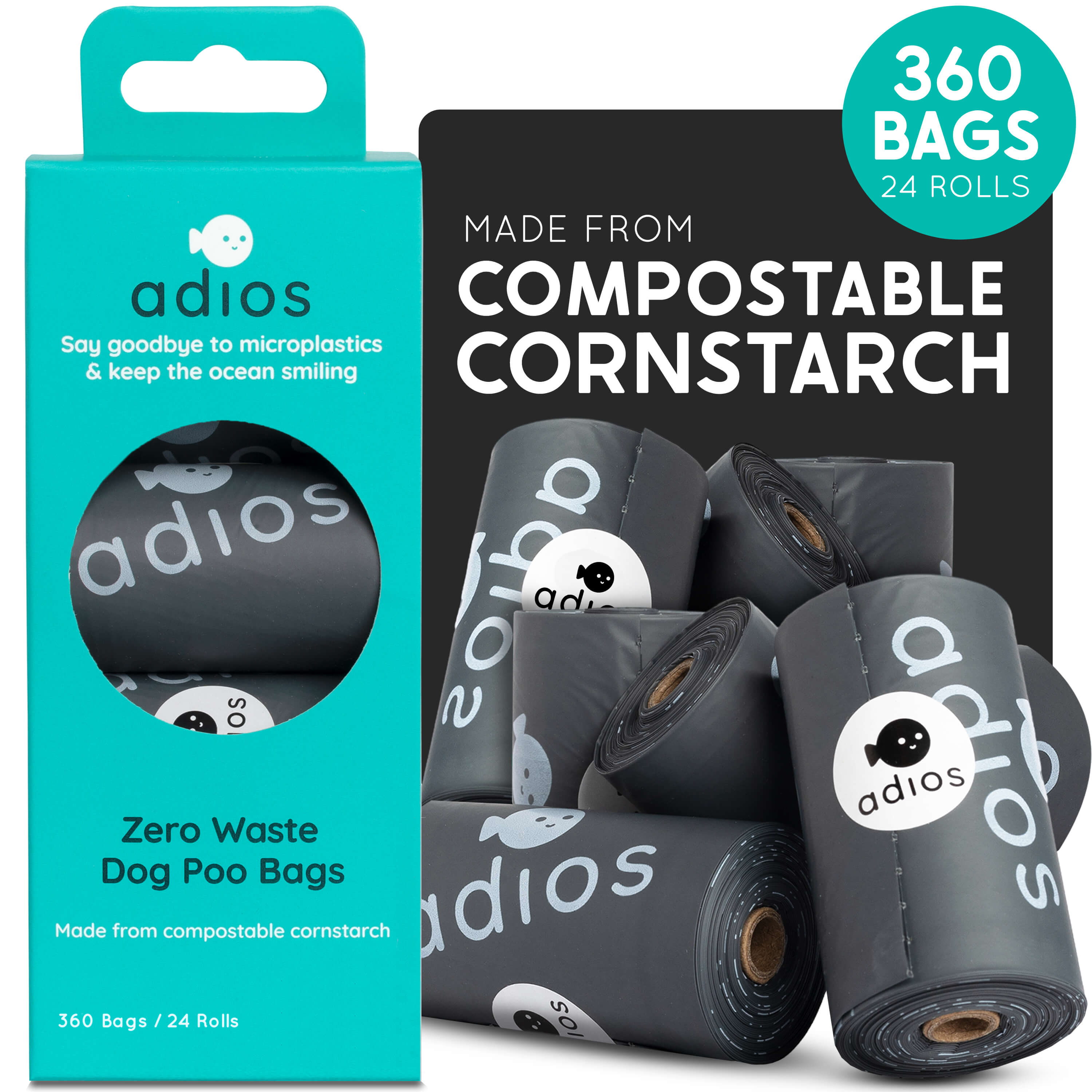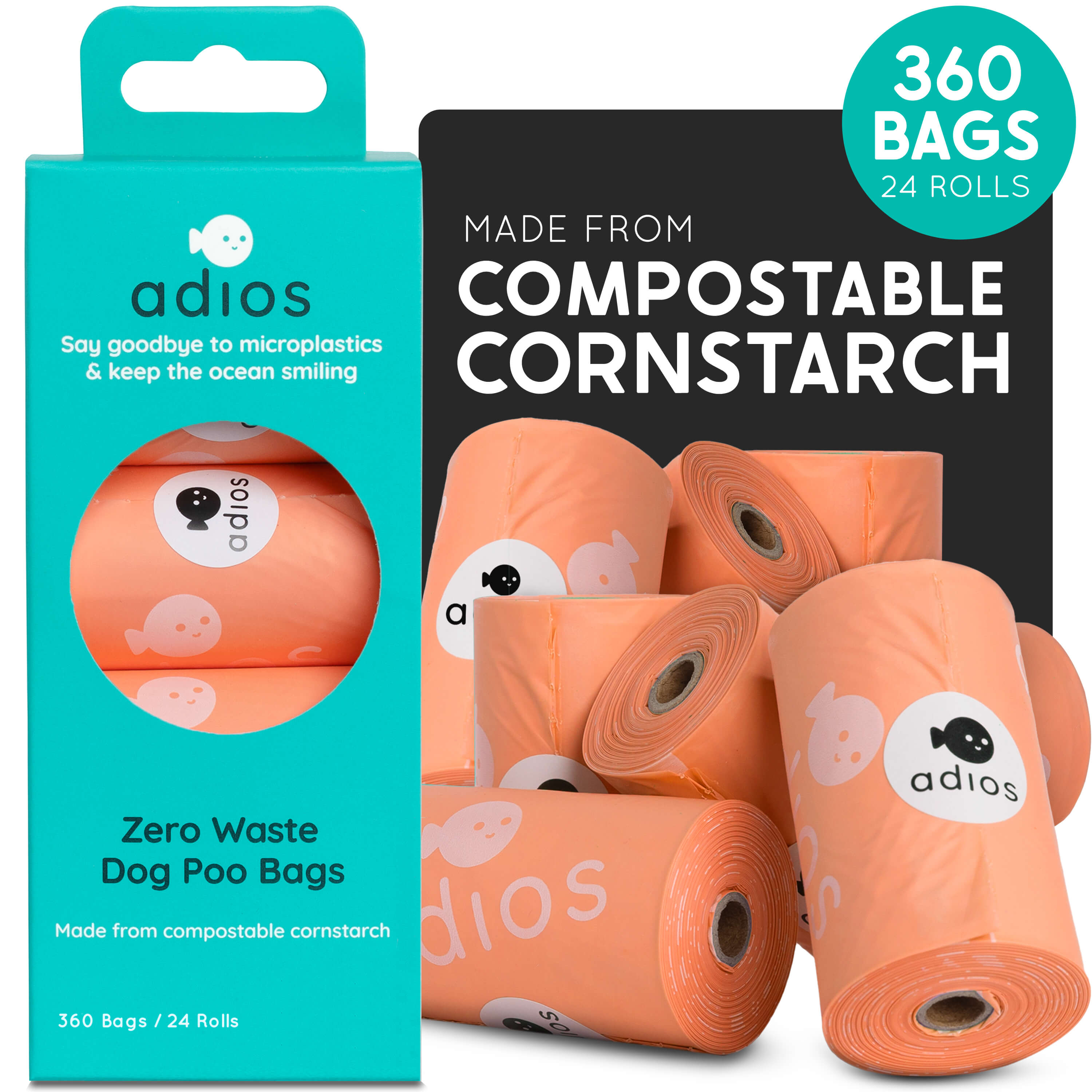

· By Ben Dodd
Burning Questions: What Happens to Dog Poo Bags After the Bin?
We get it—dog poo isn’t the most glamorous topic. But when you're picking it up every day (sometimes twice before your first coffee), the kind of bag you use matters more than you think. Most people assume it all just disappears after bin day. The truth? A large chunk of dog waste, especially in the UK, ends up being incinerated—burned at high temperatures to reduce volume.
That makes the material of your poo bag a pretty big deal.
So, let’s talk about the environmental impact of two popular options: compostable bags (like Adios) vs recycled plastic bags—especially when it comes to incineration.
First, What Is Incineration?
Incineration is a waste management method where rubbish is burned at very high temperatures—often over 850°C—in a controlled facility. These plants often generate energy from the heat produced, which sounds like a win. But burning waste, especially plastic, still has major downsides:
-
Releases CO₂ and other greenhouse gases
-
Can produce toxic byproducts like dioxins and heavy metals
-
Leaves behind residual ash that often contains microplastics
So while it’s sometimes better than landfilling, incineration isn’t exactly eco-friendly—especially if you're burning plastic.
The Problem with Recycled Plastic Bags
Using recycled plastic feels like a good thing—and in many cases, it is. Reusing existing materials helps reduce demand for virgin plastic. But when it comes to dog poo bags, there's a catch.
Most dog poo bags, even recycled ones, are made from fossil fuel-based plastic. When incinerated, they:
-
Release high levels of carbon emissions
-
Often contain dyes and additives that create toxic air pollutants
-
Leave behind non-biodegradable microplastic ash
Recycled or not, plastic still pollutes when burned.
Compostable Bags: A Cleaner Burn
Adios compostable poo bags are made from plant-based materials like cornstarch, combined with PBAT—a biodegradable component that gives the bag its strength and flexibility. While PBAT is technically a synthetic polymer, it’s designed to break down fully in composting environments, unlike traditional plastics.
And when compostable bags are incinerated?
-
They produce significantly fewer emissions than plastic bags
-
The plant-based materials release biogenic carbon—meaning it's part of the natural carbon cycle, not fossil-based
-
There’s no microplastic residue left behind
In other words, compostable bags—even when burned—are the less harmful option.
Why Not Just Compost Them Then?
We wish it were that simple. Unfortunately, most councils still treat dog waste as general refuse, meaning it heads to incineration instead of composting. The good news? By choosing a certified compostable bag, you're still reducing harm—no matter how the bag is disposed of.
At Adios, we’re building for a future where composting pet waste becomes the norm. Until then, our bags are the cleanest, greenest choice in today’s system.
Compostable vs Recycled Plastic: Incineration Impact
| Feature | Recycled Plastic Bags | Adios Compostable Bags |
|---|---|---|
| Made From Fossil Fuels | Yes | Partially (PBAT), mostly plant-based |
| Carbon Emissions When Burned | High | Lower |
| Toxic Byproducts | Yes | Minimal |
| Microplastic Residue | Yes | No |
| Compostable | No | Yes (EN13432 Certified) |
Bottom Line: Even If It’s Burned, Compostable Wins
Until we fix the waste system, many dog poo bags will end up in the incinerator. But that doesn’t mean all bags are equal. Adios compostable bags are:
-
Made with plants
-
Designed to break down naturally
-
Kinder to the air, earth, and atmosphere—even when burned
So next time you scoop the poop, know that what you choose to bag it in makes a real difference—even after it’s gone.
Say Adios to Plastic


